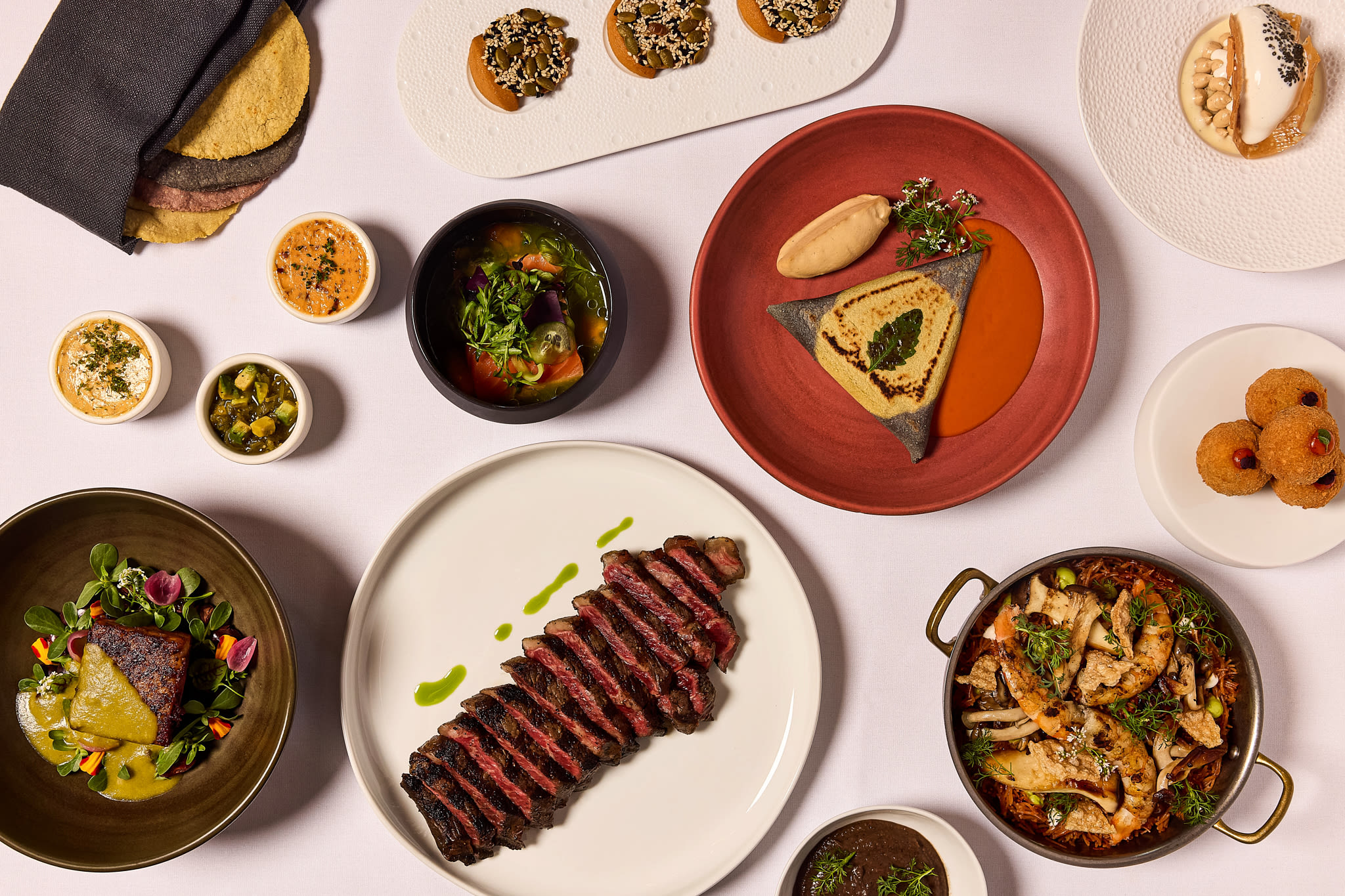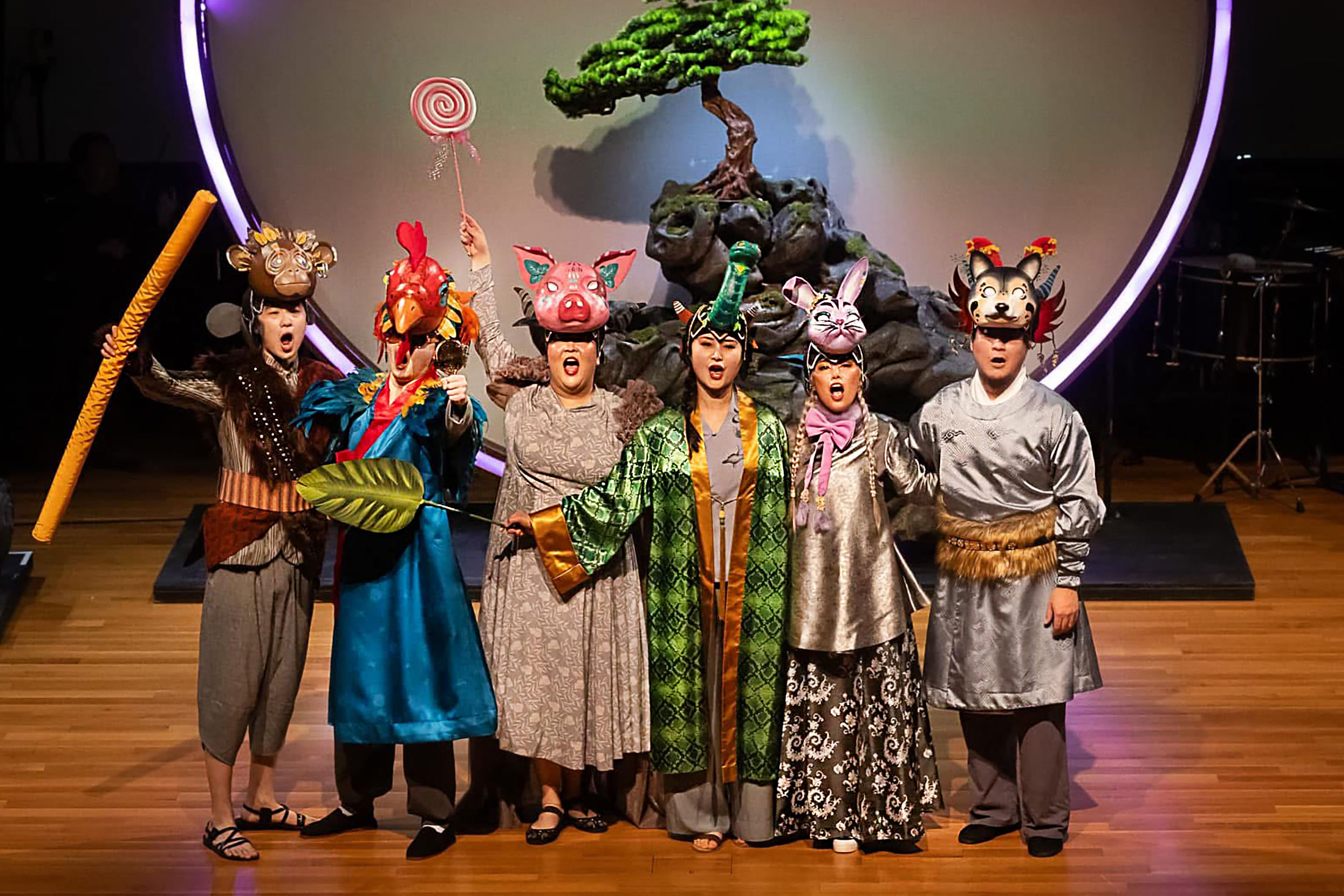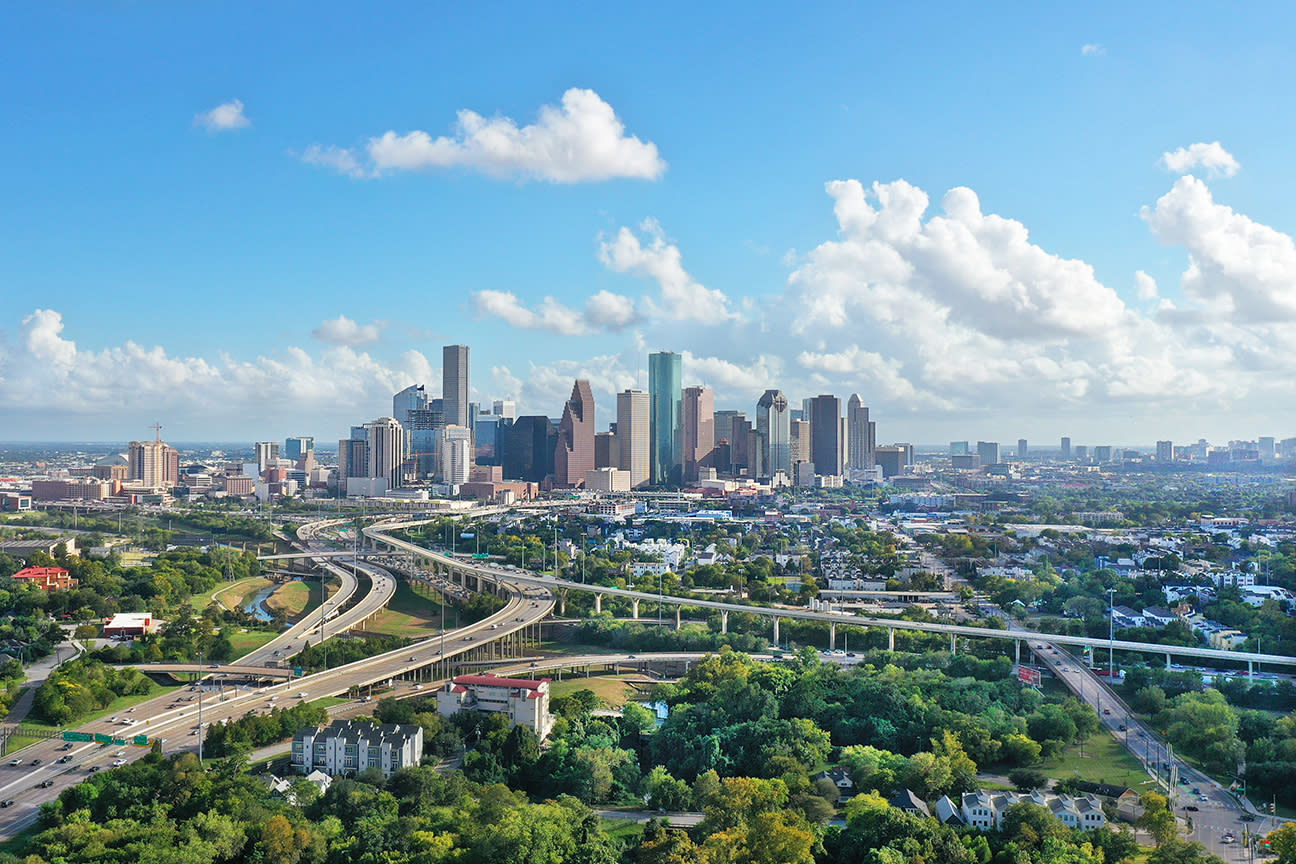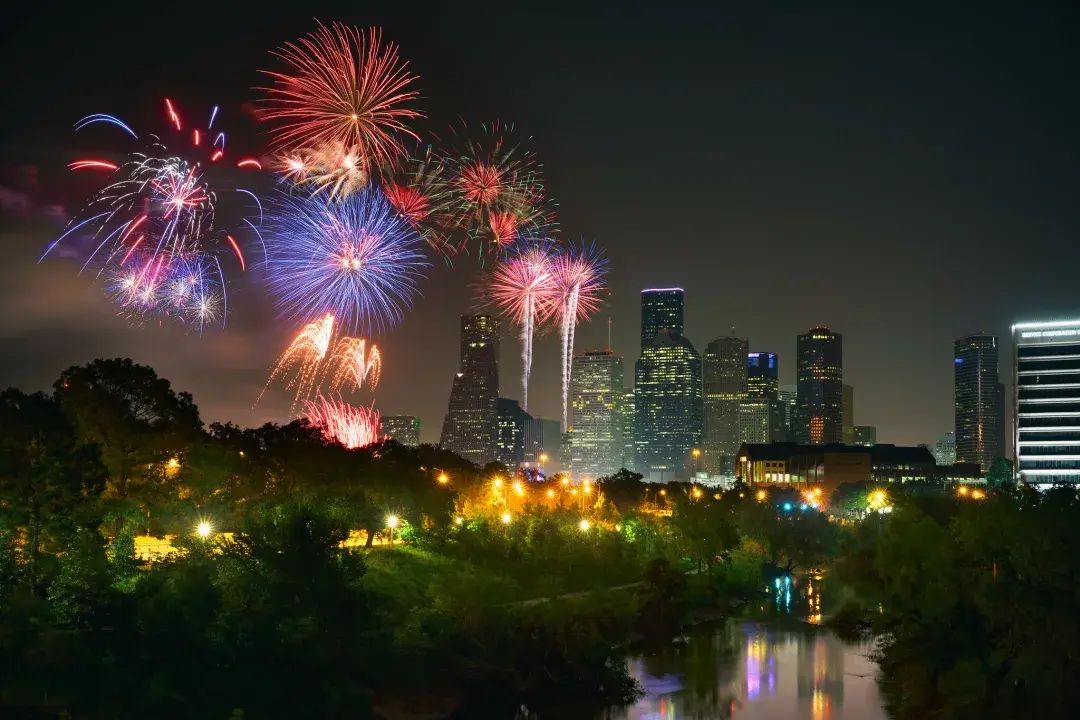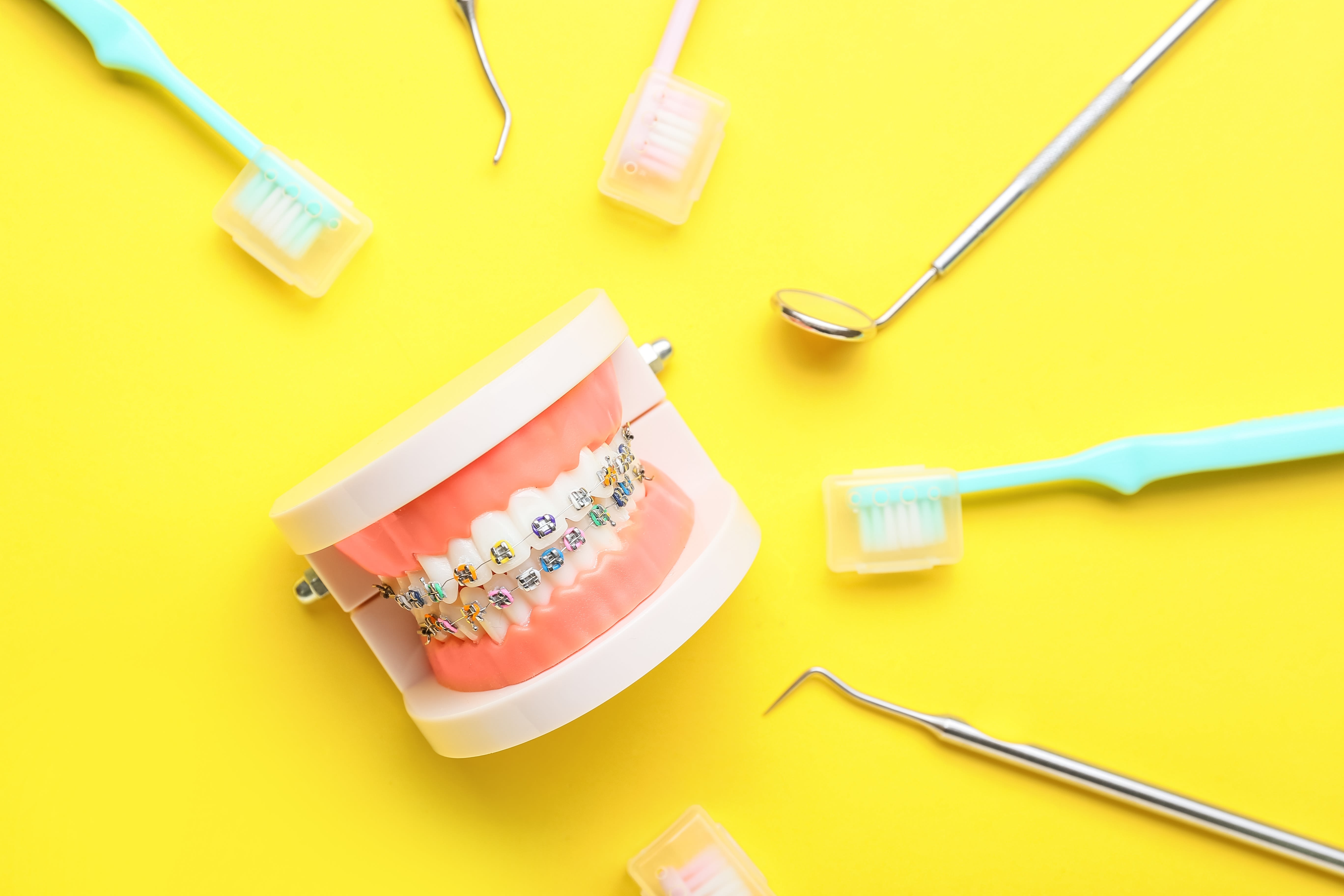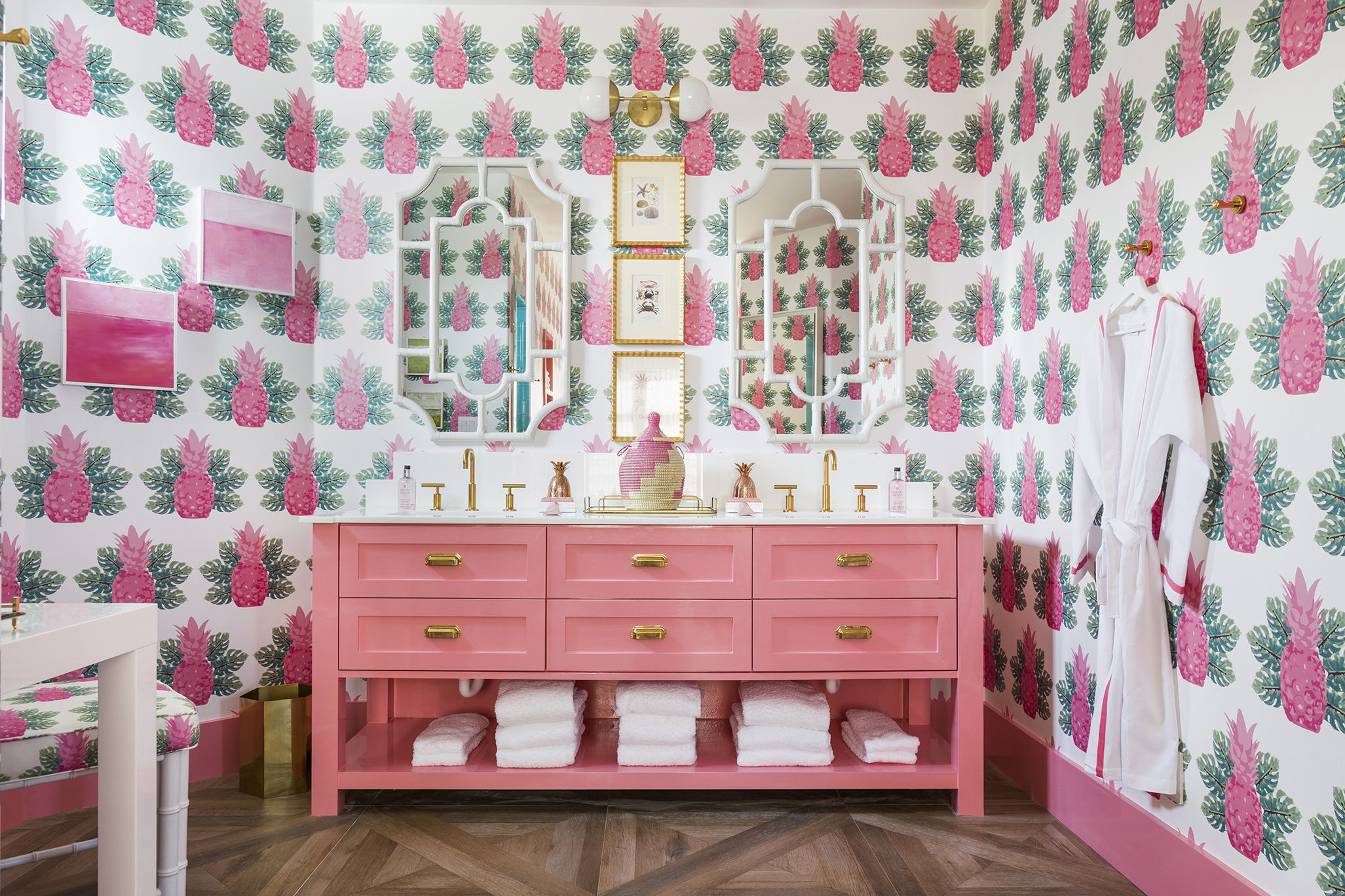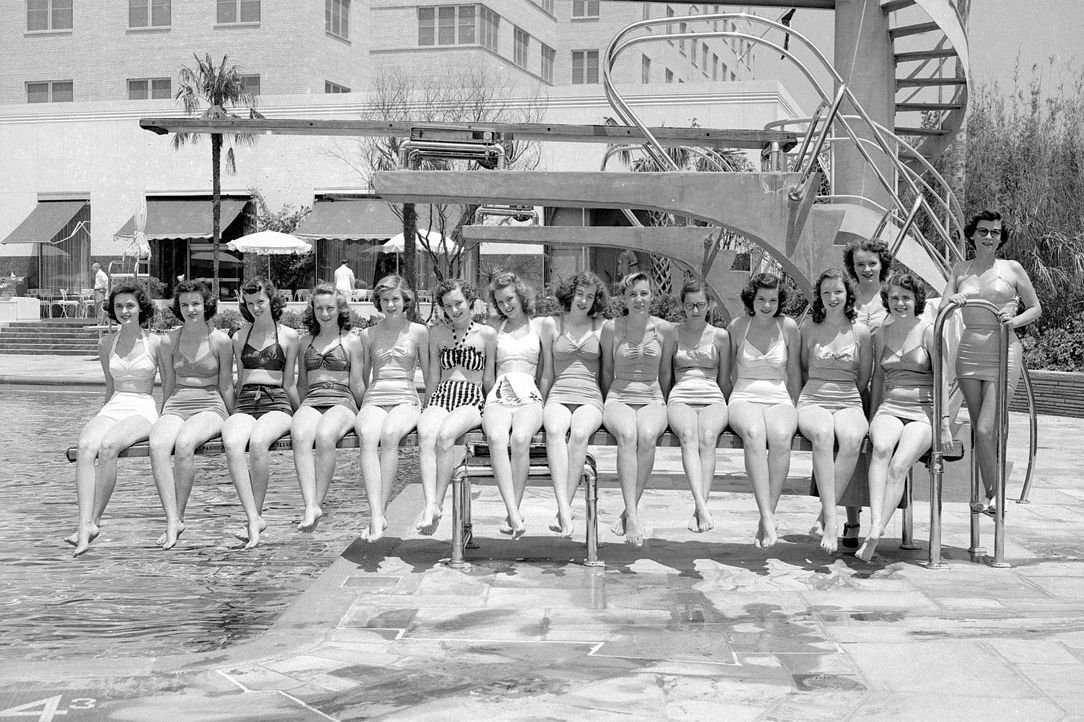
100 Years That Changed a City
Ed. Note: Reproduction of any of the images below for any purpose is illegal.
“The true astonishment of Houston, the allure that draws the migrants and fuels the imagination of the nations, is not what it is, still less what it looks like, but what it does.”
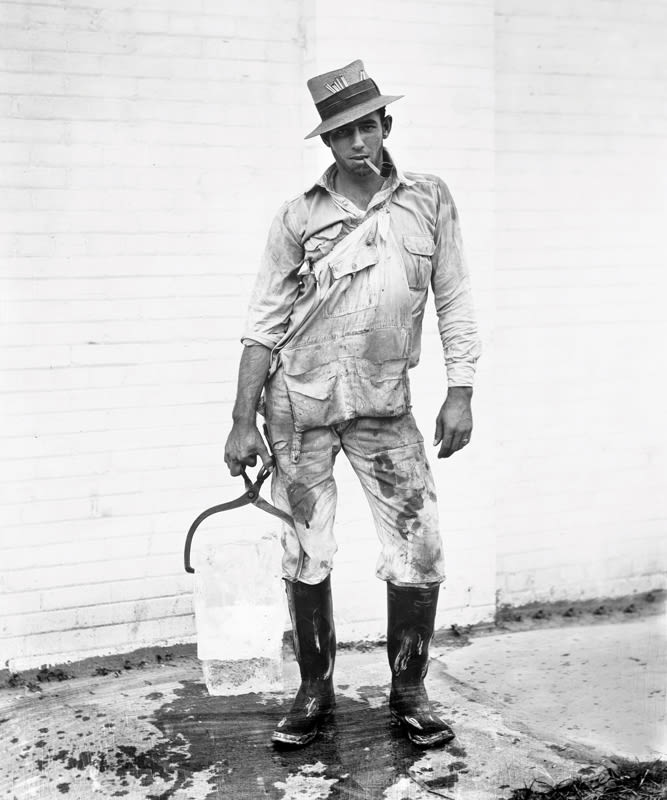
A deliveryman for the Home Ice Company hauls a 25-pound ice block cleaved from a 100-pound block, 1928.
Image: Sloane Gallery
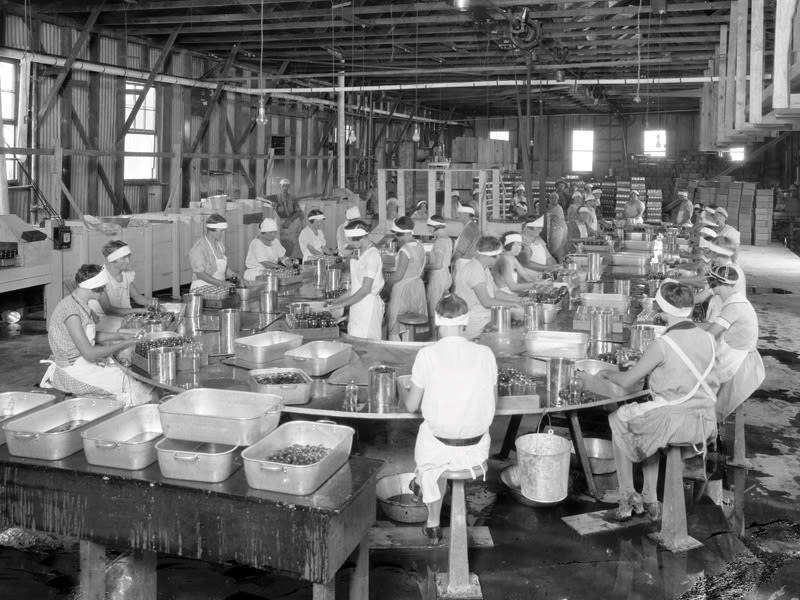
Women at a plant in Friendswood preserve figs, then the area’s largest cash crop, c. 1930.
Image: Sloane Gallery
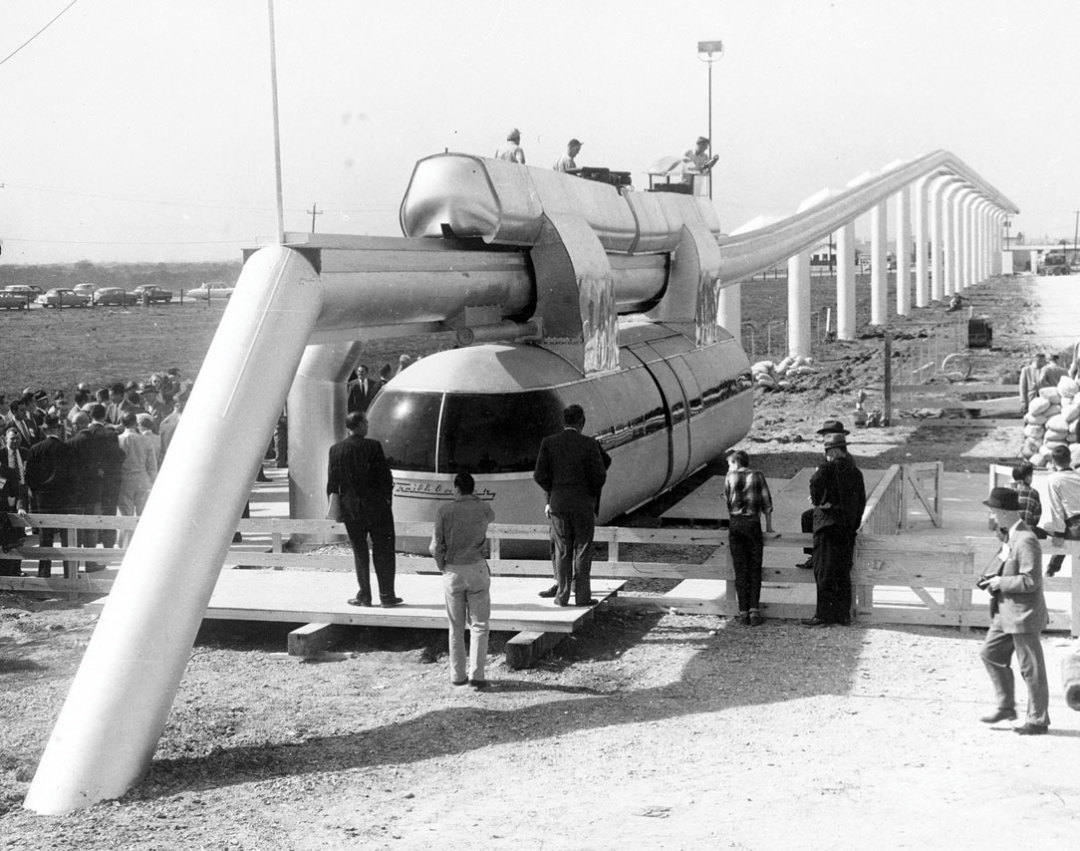
A 1,600-foot monorail line, under consideration as a solution to traffic woes, is erected at Old Spanish Trail and Main St.—and torn down eight months later, 1956.
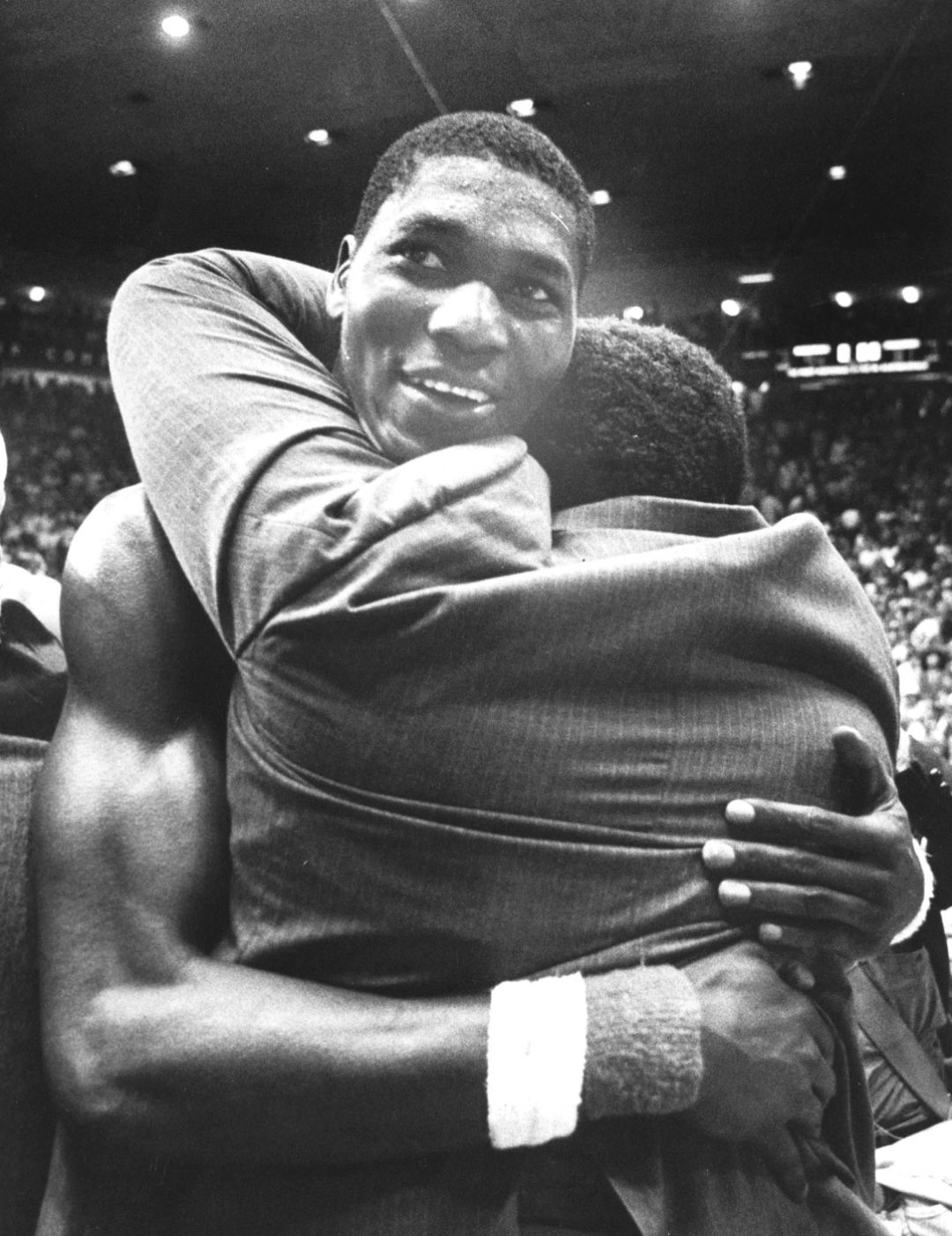
Hakeem Olajuwon hugs a UH coach after the legendary Phi Slama Jama team defeats Louisville in the NCAA semifinals, 1983.
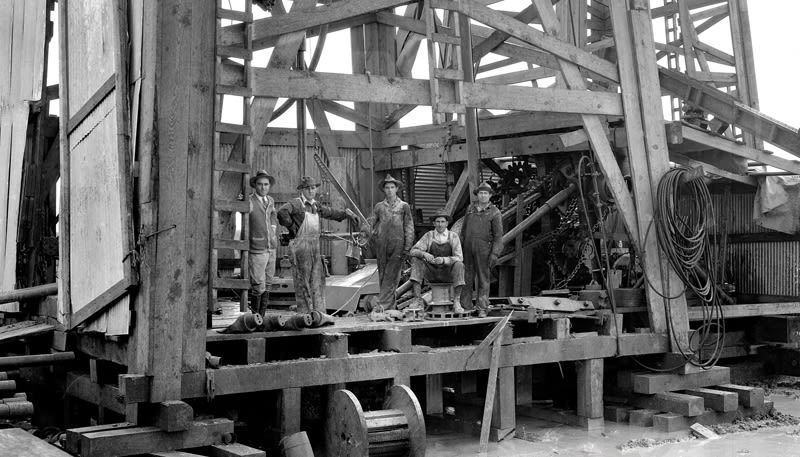
Workers on break at the Pierce Junction oil field, where NRG Stadium now stands, 1928.
Image: Sloane Gallery
“It was [the Malaysians] especially, he reported, who seemed most to love Houston. They were singularly articulate about the limits of where they came from. The stifling rigidity. The paternalism. Yes, Houston is nuts. But it’s so much fun. There is such individualism. You have so much freedom.”
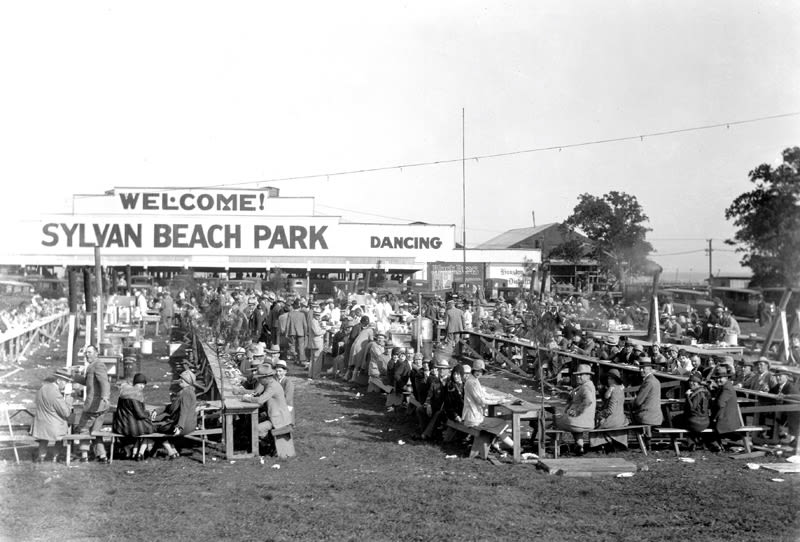
LaPorte’s Sylvan Beach Park, a popular venue for community dances and company picnics, c. 1930.
Image: Sloane Gallery

Young men dress as crawfish and women during the No-tsu-oh Festival, then the city’s biggest annual event, 1913.
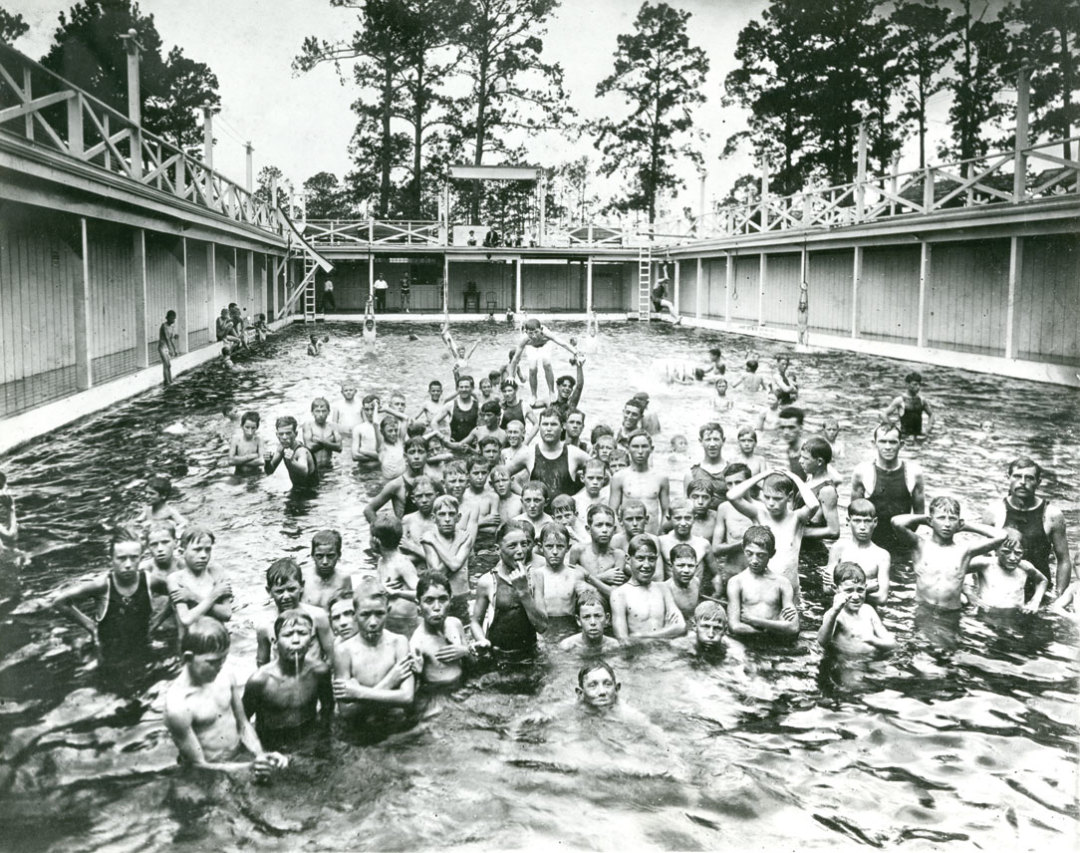
A neighborhood swimming hole keeps Houstonians cool during un-air-conditioned summers, c. 1915.
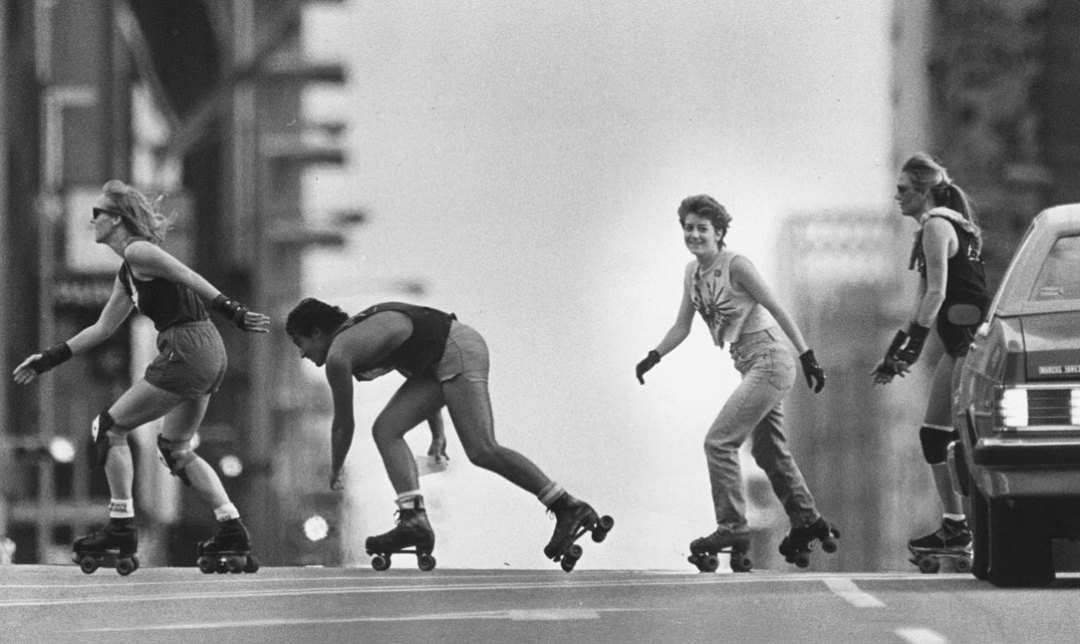
Members of the Urban Animals, an informal group of street skaters, celebrate the 5th anniversary of the group’s founding by skating through downtown, 1984.
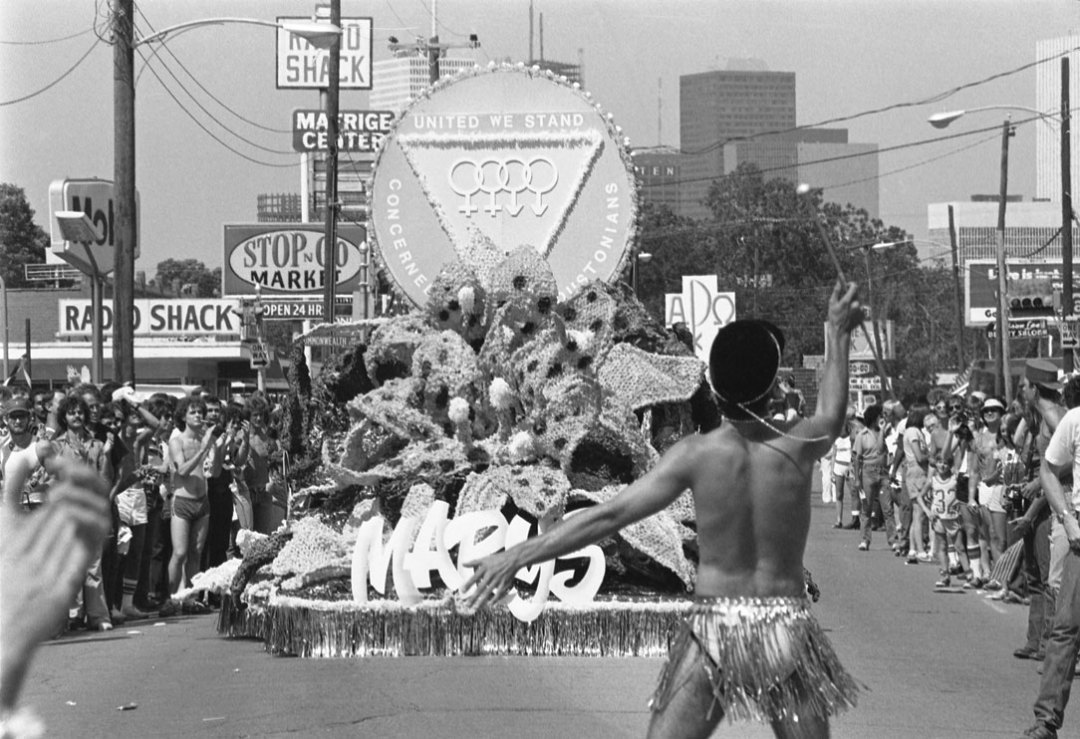
A float from Mary’s, the city’s iconic gay bar, cruises down Lower Westheimer during the first annual Pride Parade in Montrose, 1979.
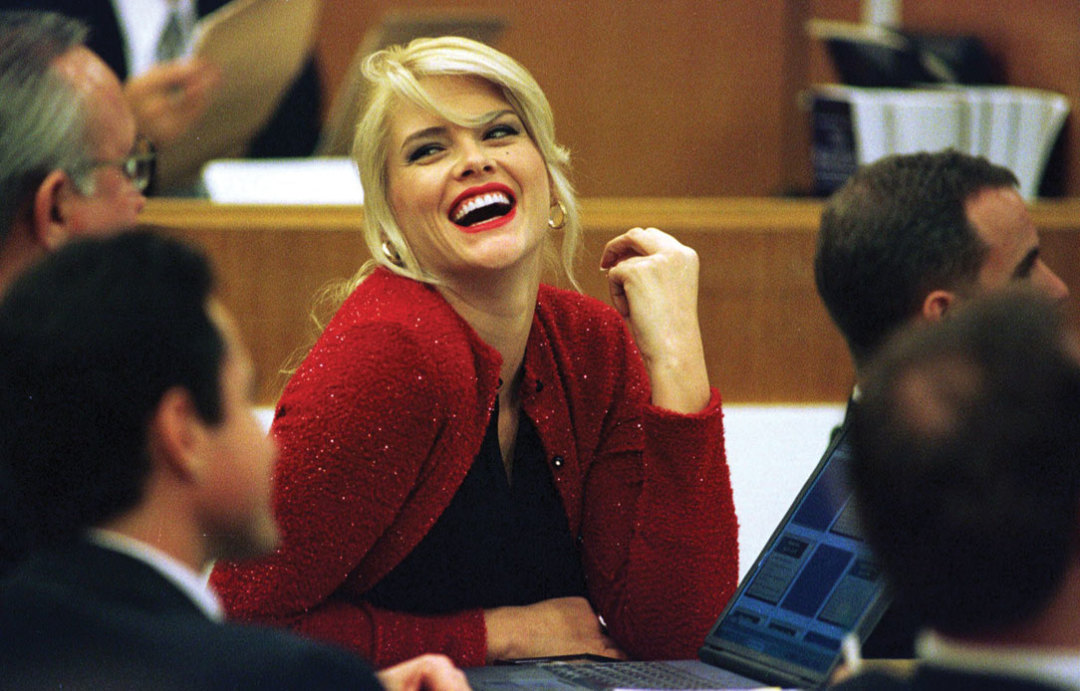
Anna Nicole Smith laughs during courtroom proceedings held to decide the fate of the $1.6 billion fortune of J. Howard Marshall, her late husband, 2000.
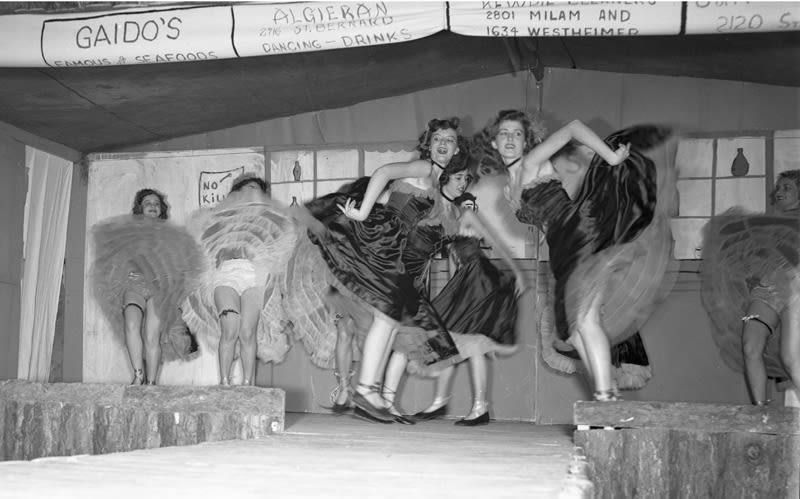
Young coeds dance on stage at UH’s annual Frontier Fiesta festival, which LIFE called “the Greatest College Show on Earth,” c. 1950.
Image: Sloane Gallery
“The milieu to which I mainly belong—the intelligentsia or “art crowd”—is another hardy scene that nevertheless eludes the world’s image of Houston, maybe because intellectuals are less easily packaged into mythology than cowboy boots.”
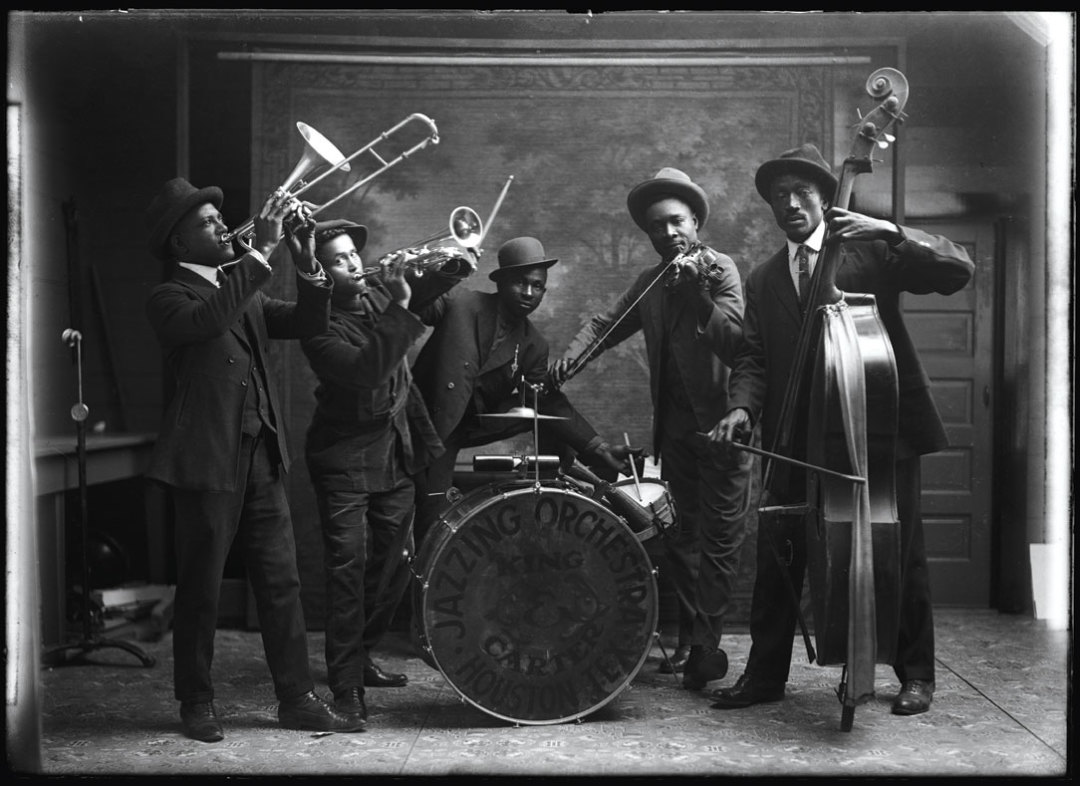
The five-piece King & Carter Jazzing Orchestra poses for a photo, 1921.
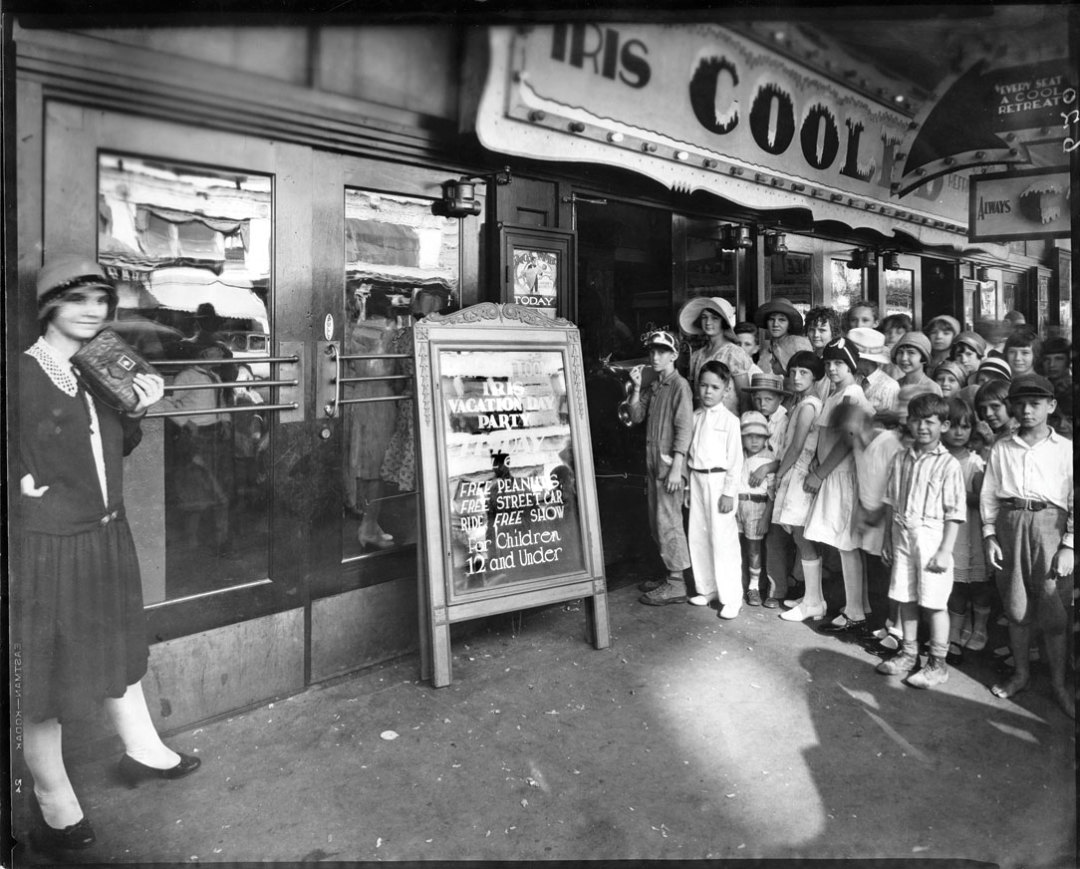
The promise of free A/C and peanuts lures children to downtown’s Iris Theater, then connected to two other theaters, the Texas and the Uptown, via underground tunnel, 1928.
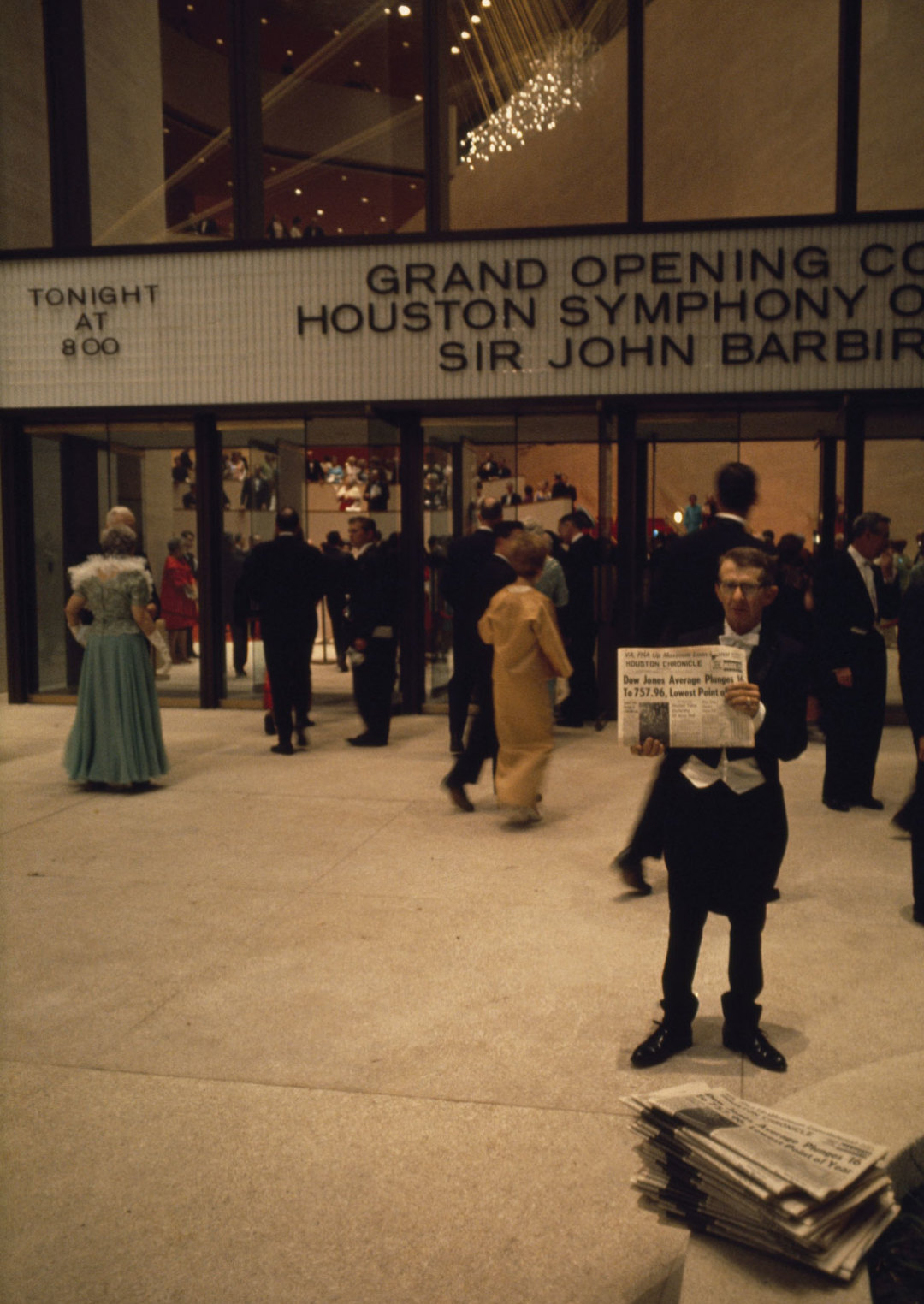
Concertgoers outside Jones Hall ignore front-page news of a plunging stock market on the Houston Symphony’s opening night, 1967.
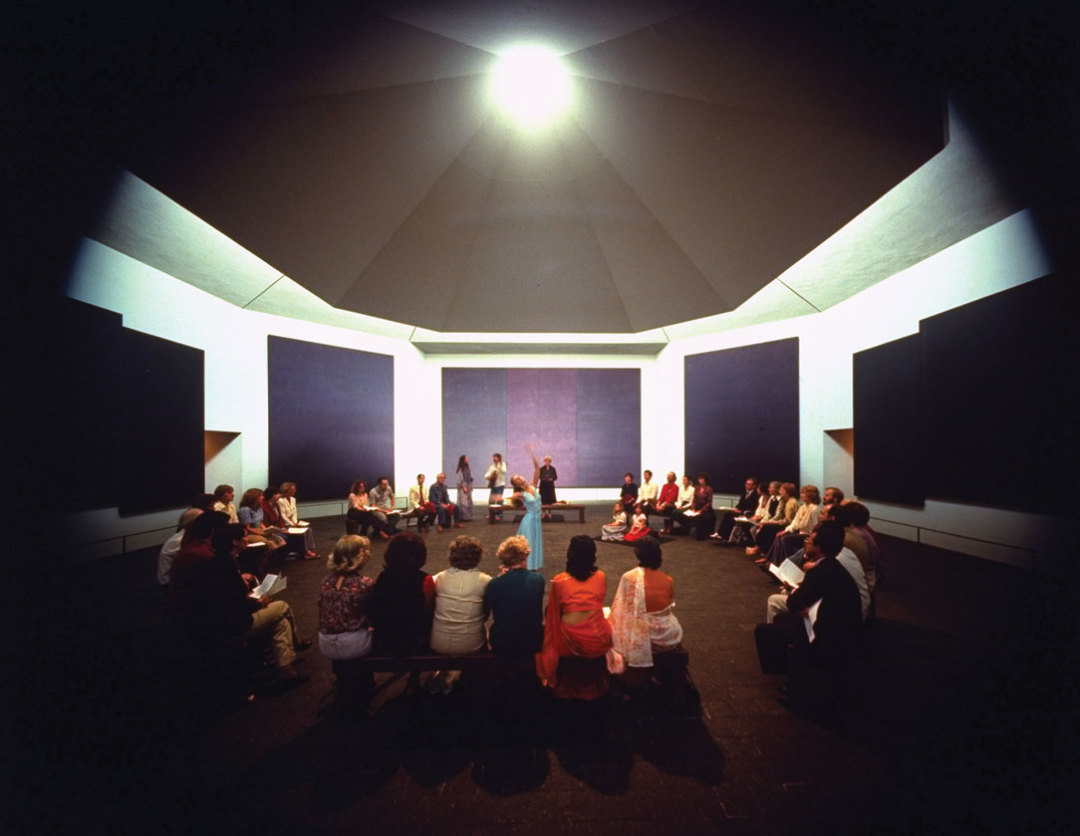
Patrons take in a modern dance performance at the Rothko Chapel, 1979.
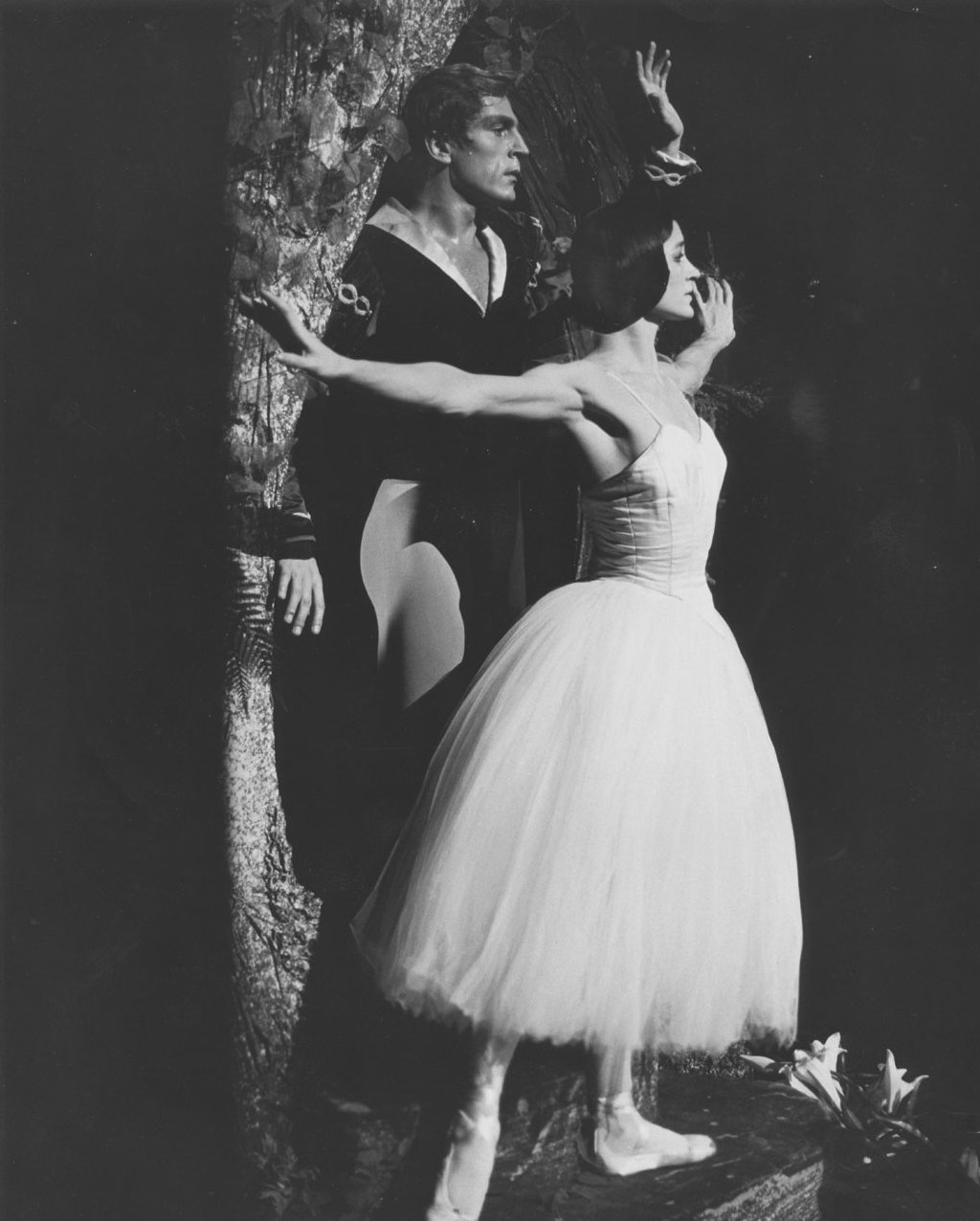
Carla Fracci and Erik Bruhn, two of the greatest dancers of the era, star in the Houston Ballet’s production of Giselle, 1967.
Image: Courtesy Houston Ballet
“The one thing that impressed me about Houston when I came here 12 years ago was the basic friendliness. That ‘howdy’ attitude they had. That they still do…. What are you wanting, eventually? A pretty structure? Or a pretty society?”
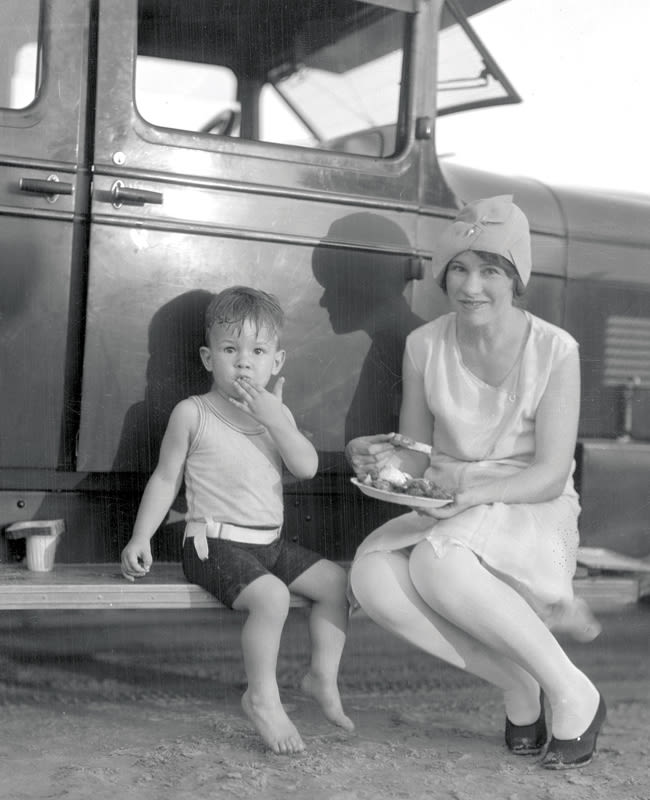
Mother and son share a snack at the Galveston Beach Mother and Son Picnic, 1929.
Image: Sloane Gallery
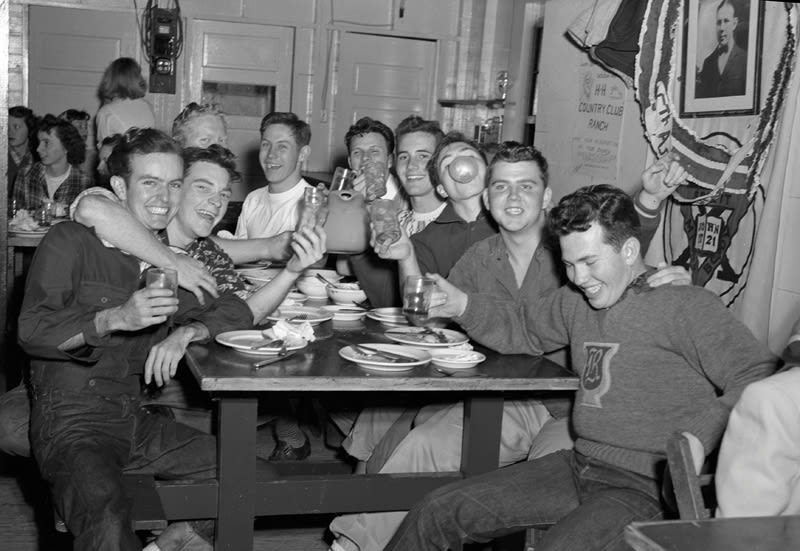
Kids kick back at the H & H Ranch and Club in north Houston, a popular hangout for high school students, c. 1940.
Image: Sloane Gallery
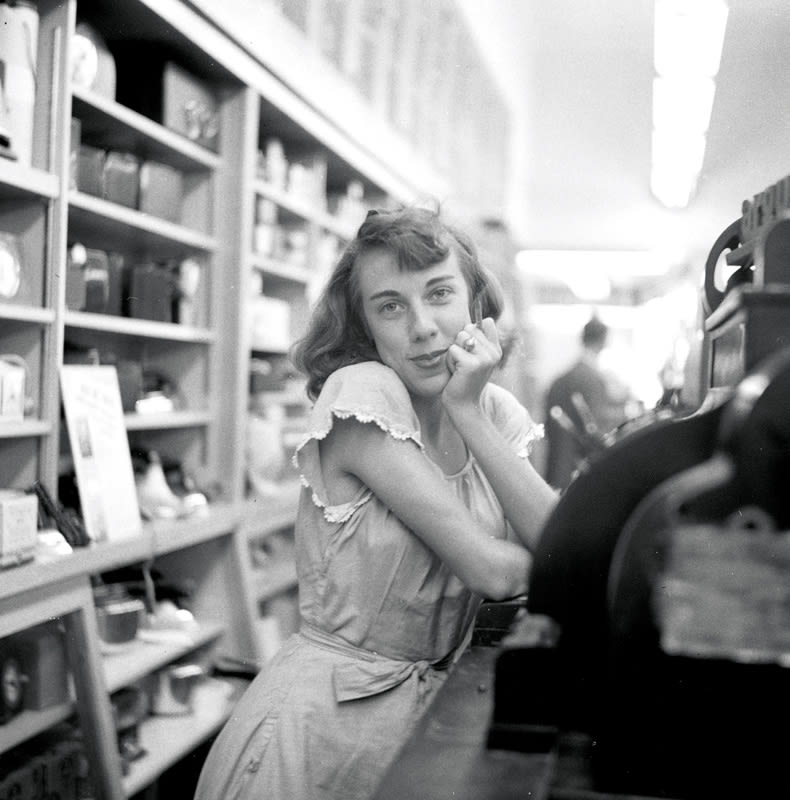
A San Jacinto High School student works as a cashier after school, 1948.
Image: Sloane Gallery
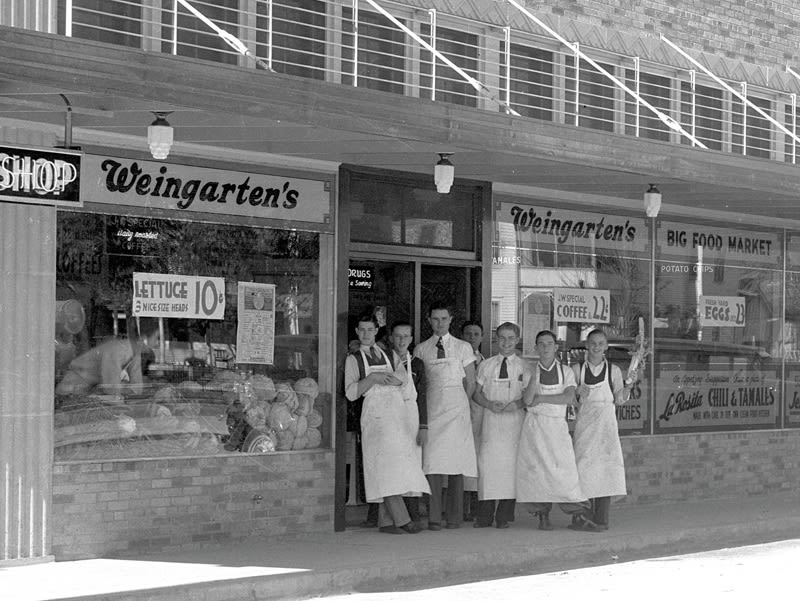
Grocers await the public outside the just-opened second location of Weingarten’s in downtown Houston, 1920.
Image: Sloane Gallery
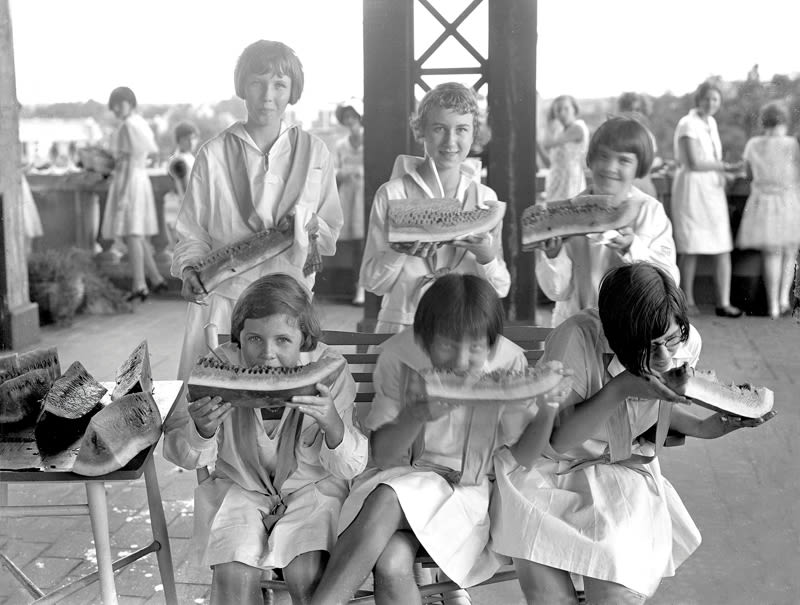
Young girls enjoy a refreshing treat during a summer visit to Luna Park, the “Coney Island of Texas,” at 2200 Houston Ave., now the location of the I-10 and I-45 interchange, c. 1925.
Image: Sloane Gallery
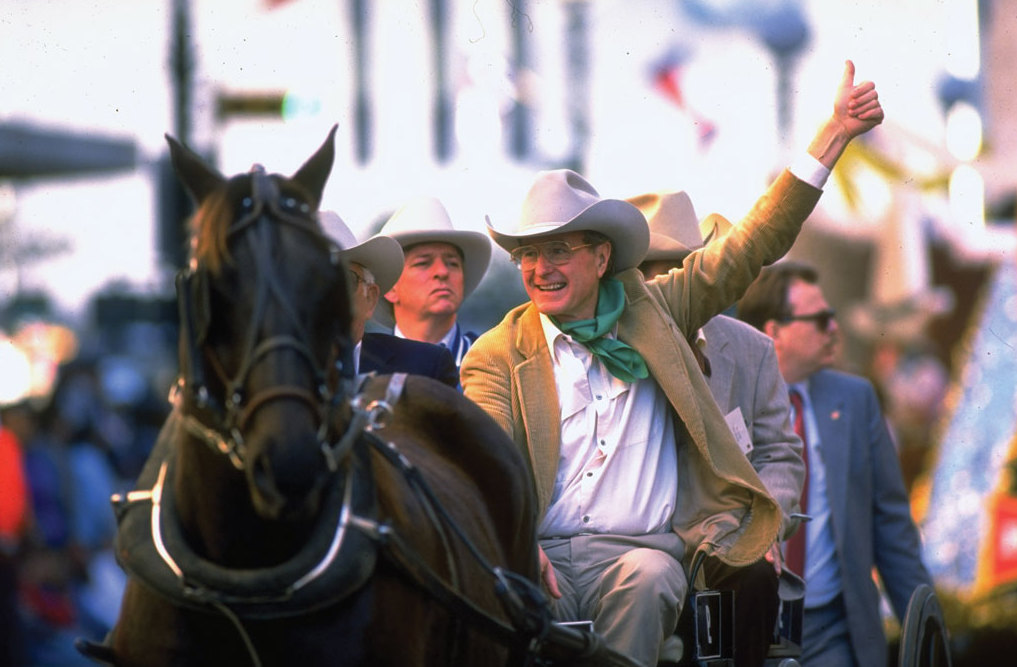
George H. W. Bush, then the vice president and Republican presidential hopeful, rides in the Houston Livestock Show & Rodeo Parade, 1988.
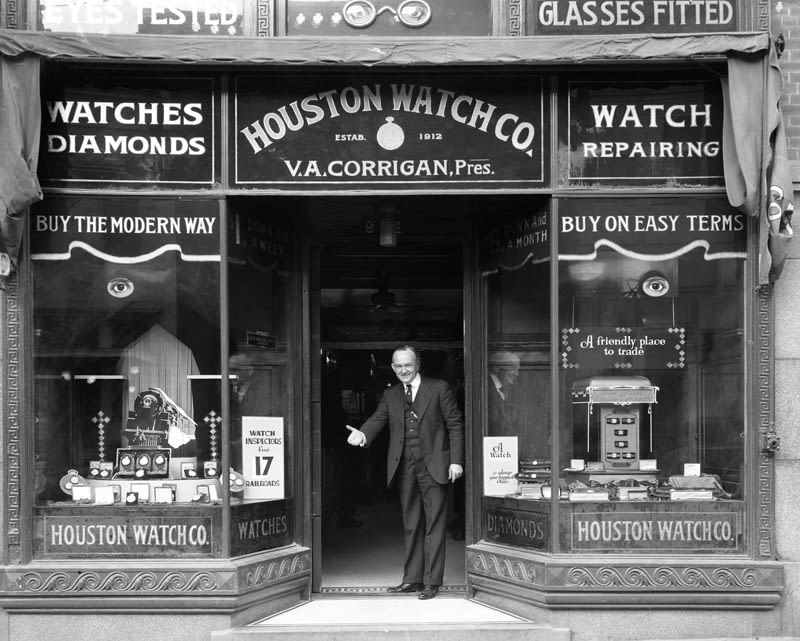
R.J. Slagle invites customers into his downtown store, the Houston Watch Co., 1928.
Image: Sloane Gallery
“Houston, filled with graft and greed and ambition and crime and vice and poverty and Aladdin wealth and Old South aristocracy and Middle West materialism and New York capital.”
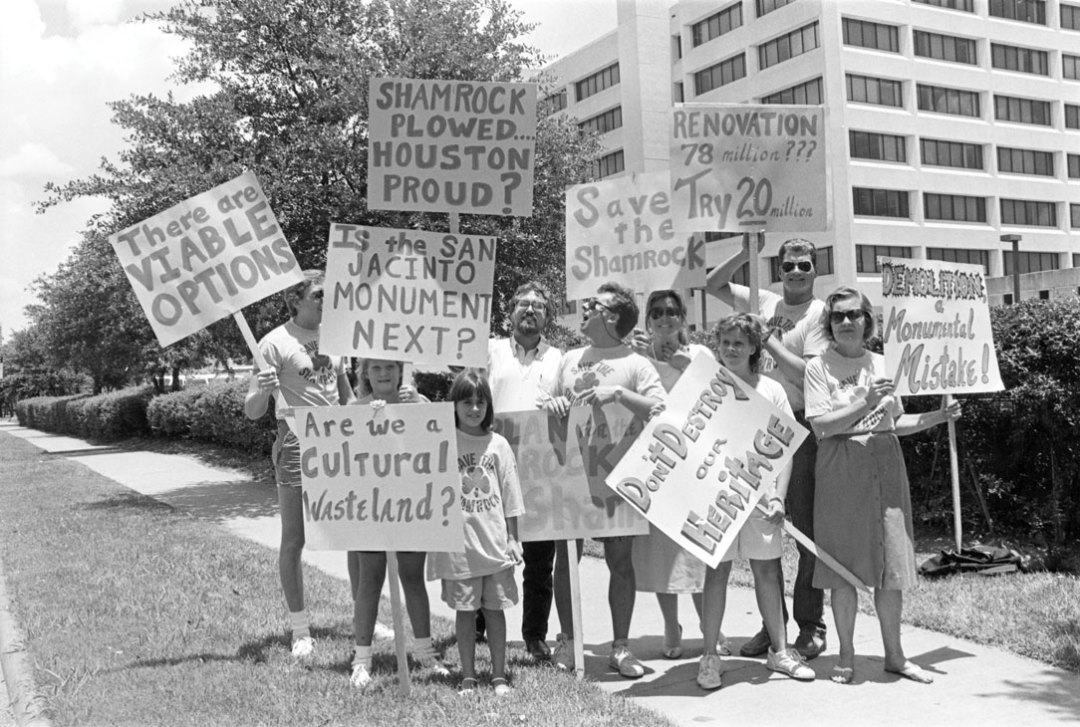
Houstonians protest the planned demolition—only 33 years after its construction—of Glenn McCarthy’s Med Center masterpiece, the Shamrock Hotel, 1982.
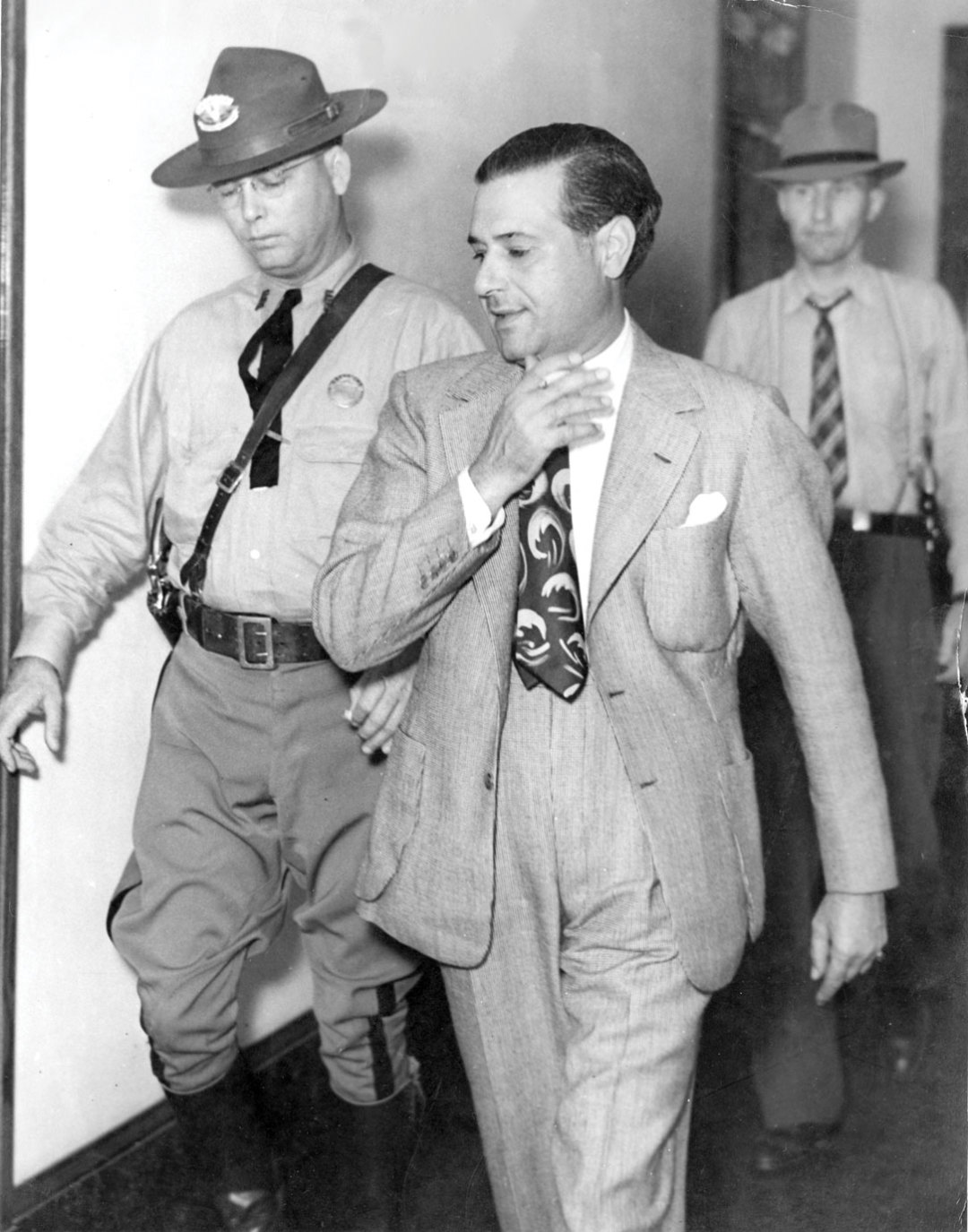
Galveston gambling magnate and organized crime boss Sam Maceo, owner of famous casino The Balinese Room, under arrest for violating federal narcotics laws, 1937.
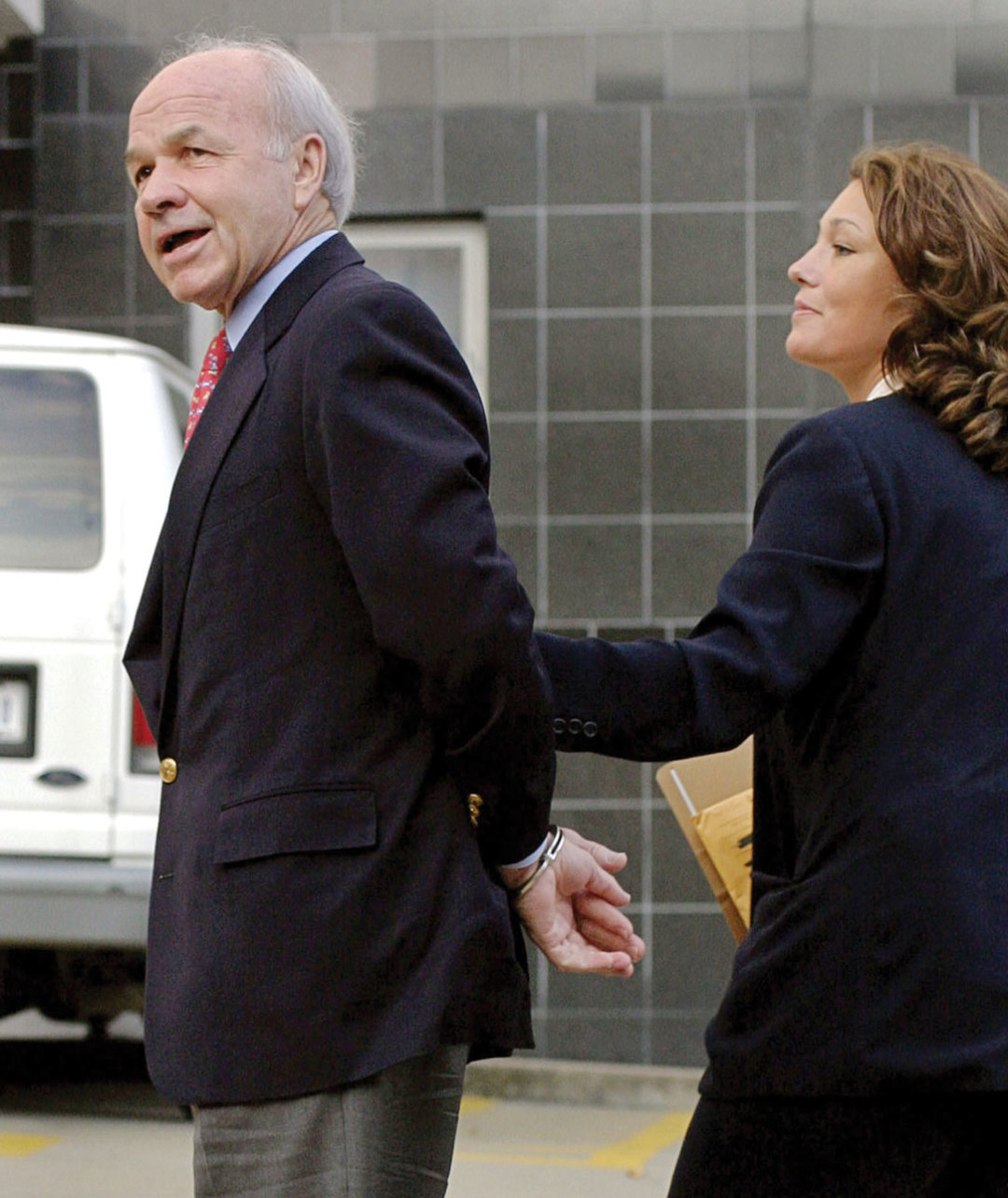
Kenneth Lay, former chairman and CEO of Enron, is escorted into federal court, 2004.
Image: AP Photo / Michael Stravato
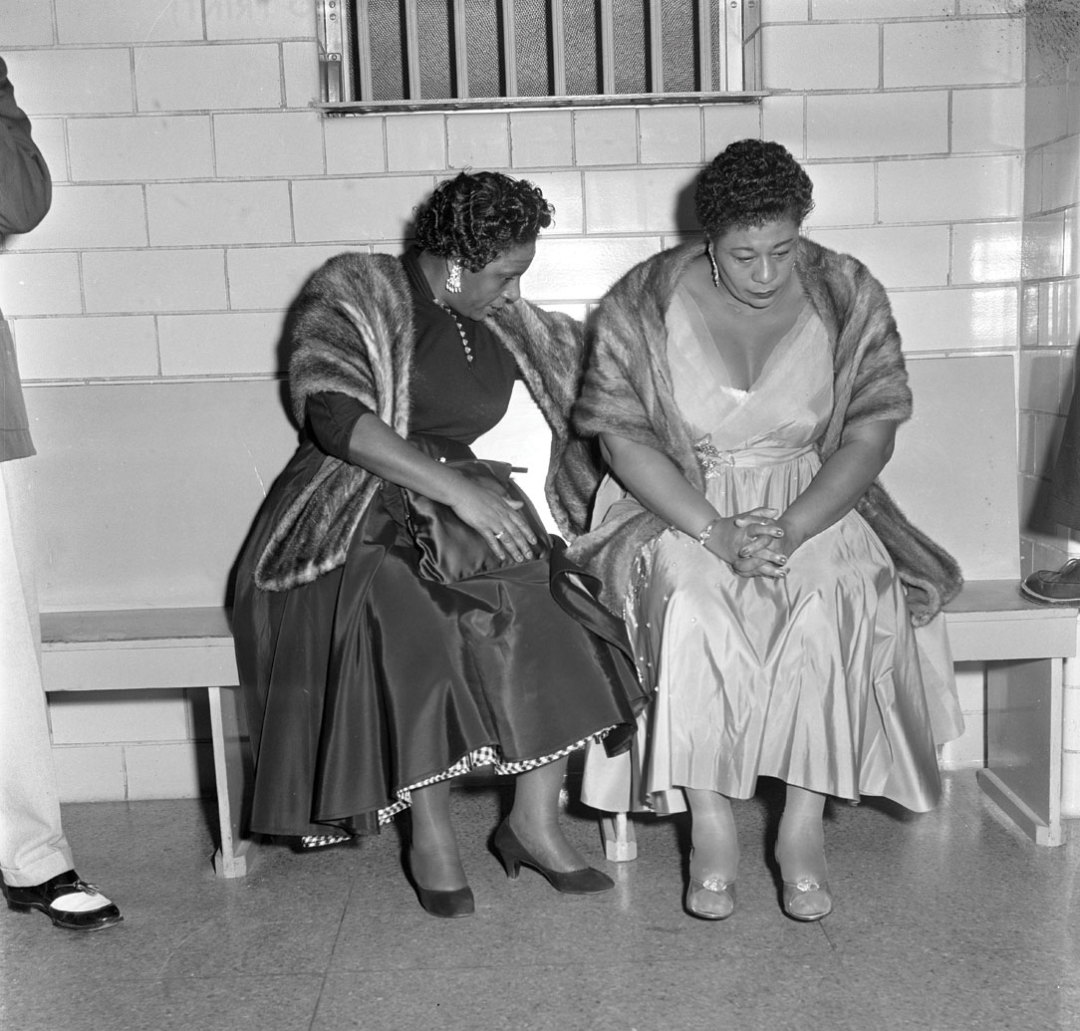
Ella Fitzgerald, right, sits with her assistant in a HPD holding cell after she and fellow jazz great Dizzy Gillespie were arrested for allegedly throwing dice in Fitzgerald’s dressing room at the Houston Music Hall, 1955.
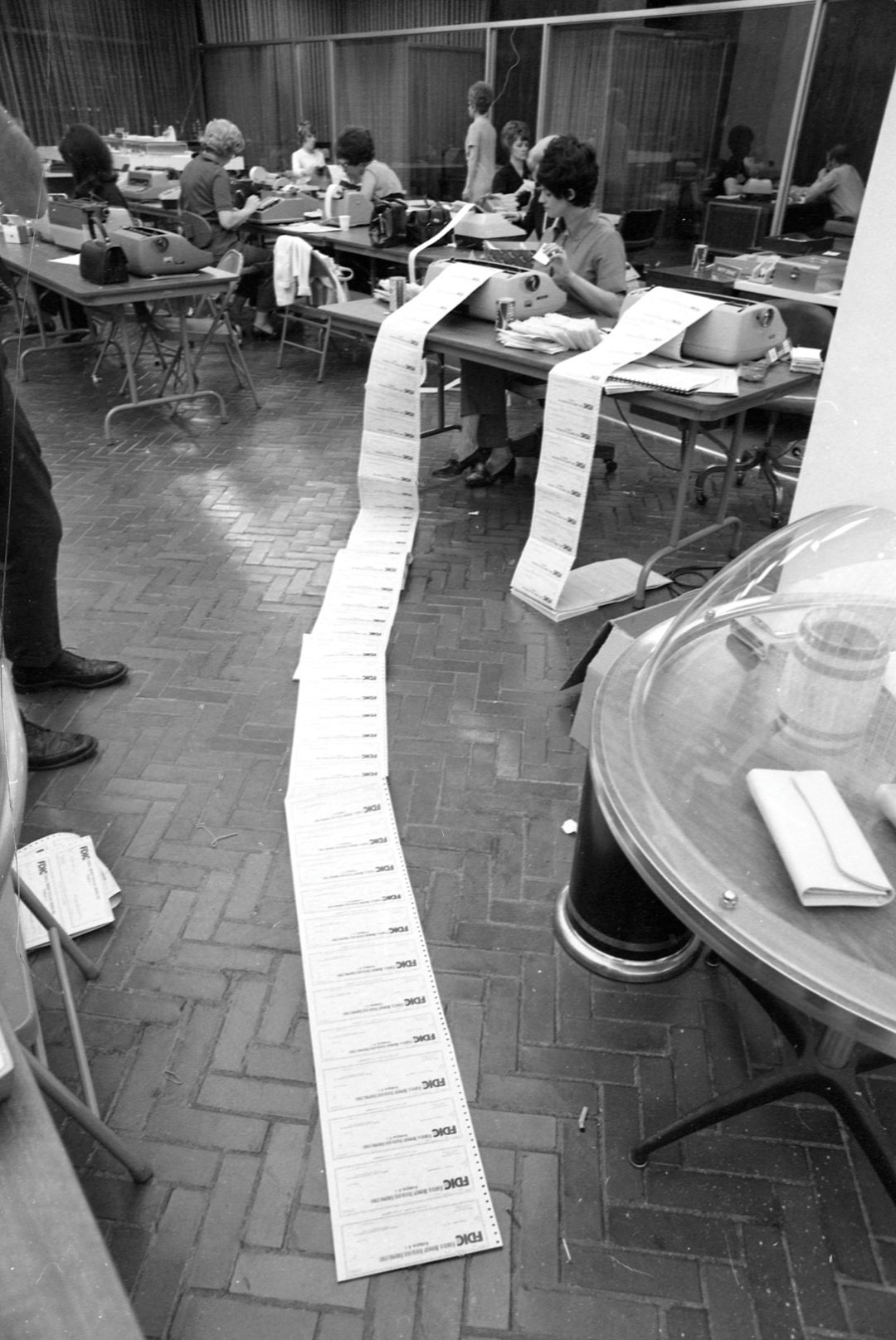
Secretaries print reams of FDIC checks while investigating the Sharpstown stock fraud scandal that ended the careers of Houston businessman Frank W. Sharp and Texas House Speaker Gus Mutscher, Jr., among others, 1971.
“Houston has never been conventionally pretty; but, hot, shady, and overgrown, it’s always been alluring to those who saw, or more likely sensed, opportunity in its overwhelming, almost overweening, fecundity.”
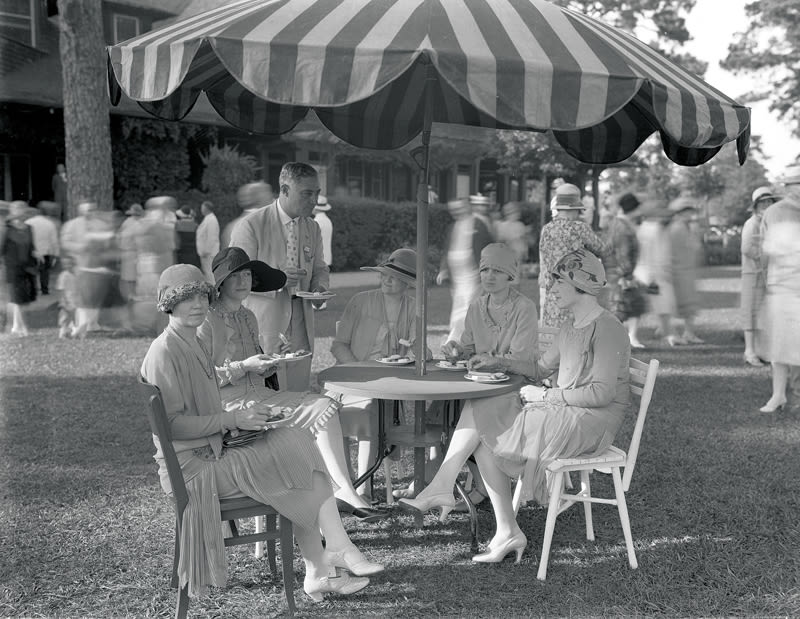
The Harris County Bar Association hosts a garden party at the River Oaks Country Club, c. 1930.
Image: Sloane Gallery
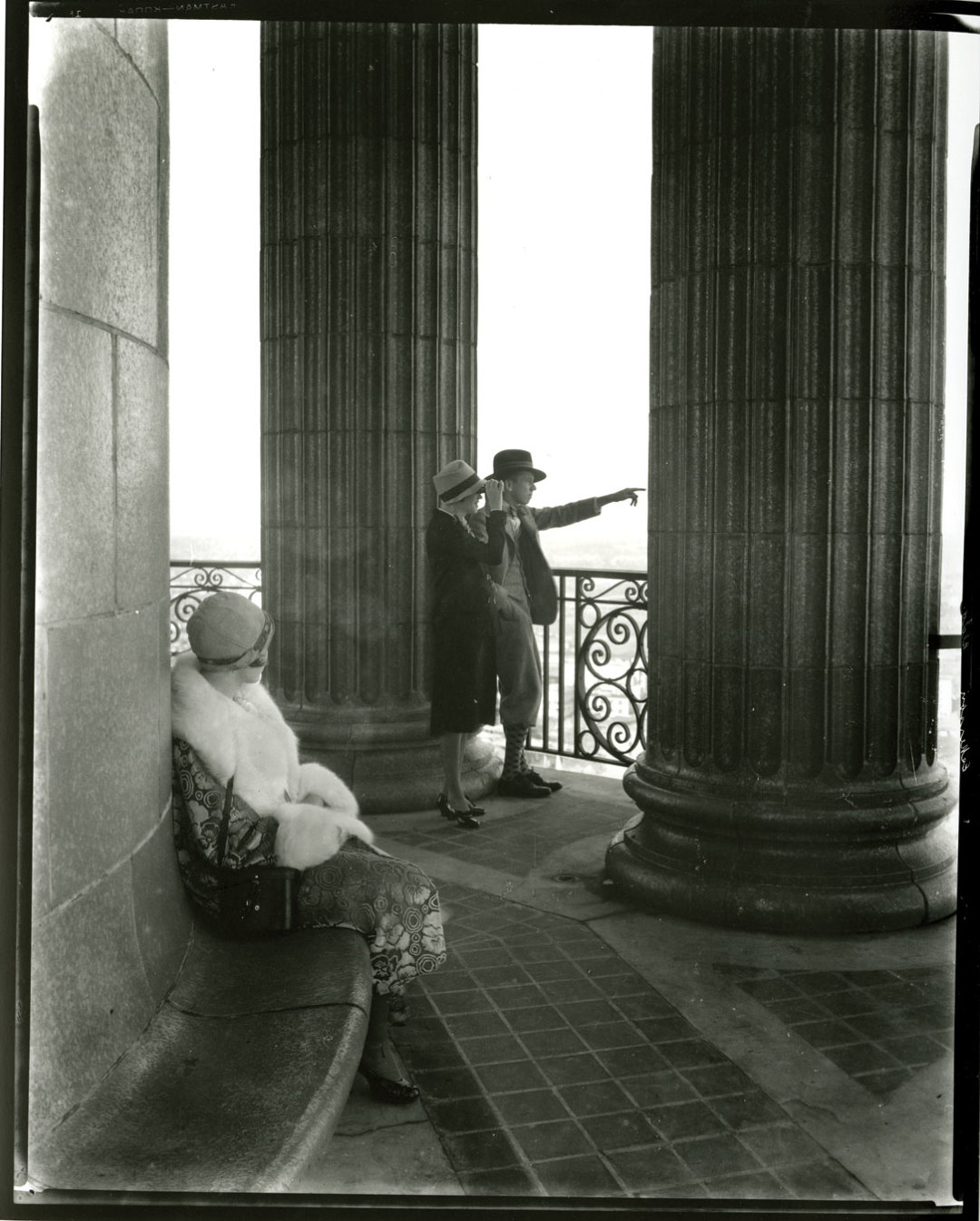
Sightseers take in the view from the tempietto atop the 32-story Niels Esperson Building, the tallest in Texas upon its completion, 1927.
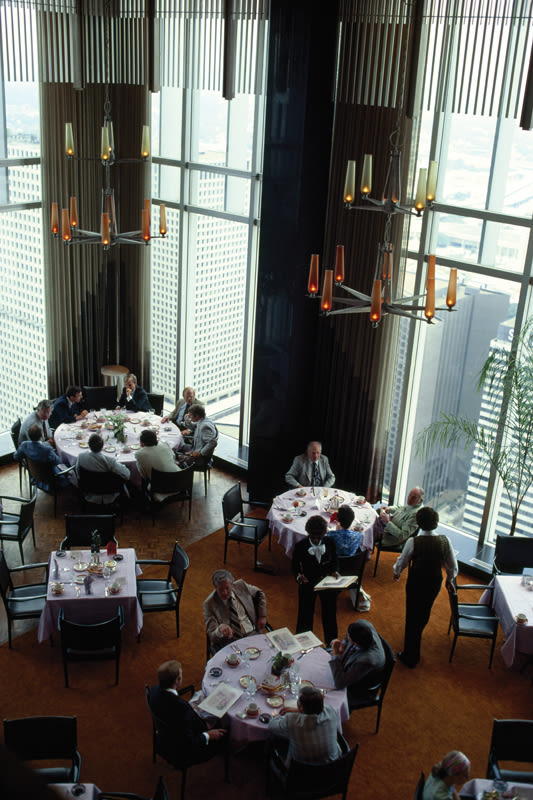
Members conduct business over lunch at the Petroleum Club, atop the ExxonMobil building, 1980.
Image: Sloane Gallery
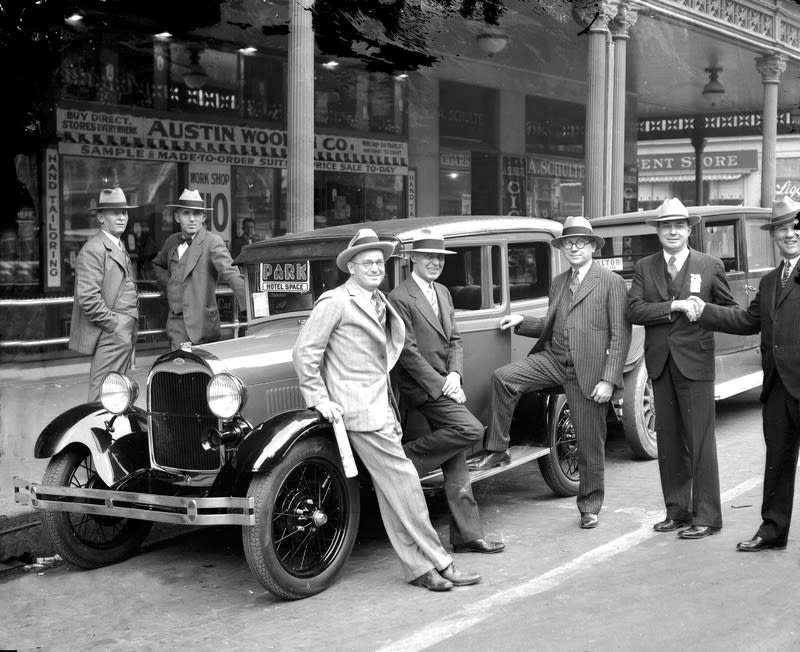
The proud owner of Houston’s first Model A Ford shows off his purchase to friends downtown, 1928.
Image: Sloane Gallery
The flotsam rained down on east Texas and Louisiana, and one of the things that washed down from the sky was a mission patch from STS-107….It would certainly be useless in helping to determine the cause of Columbia’s destruction, but I could not look at this patch without feeling that stitched deep into the fabric was some sort of discernible clue to understanding the men and women who had dreamed of flying to the heavens, and who had died trying to come home to earth.”
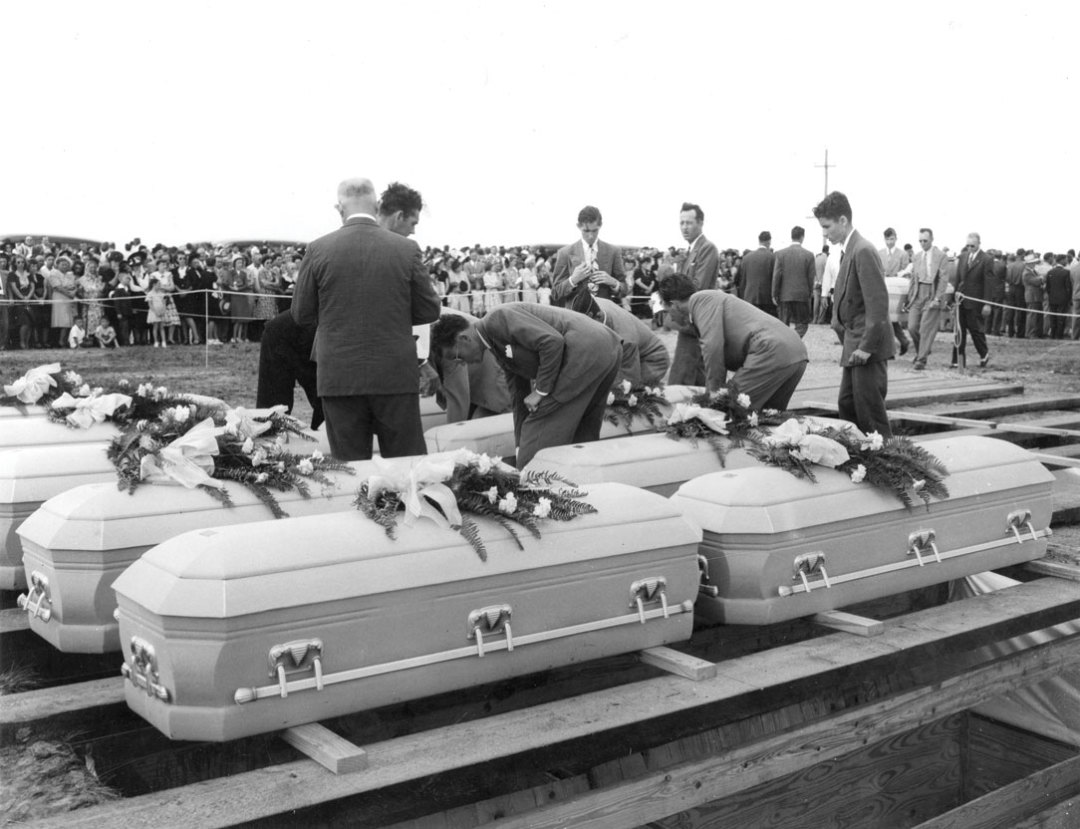
A crowd of mourners watches as pallbearers line up caskets containing some of the 581 victims of the Texas City Disaster, still the deadliest industrial accident in US history, 1947.
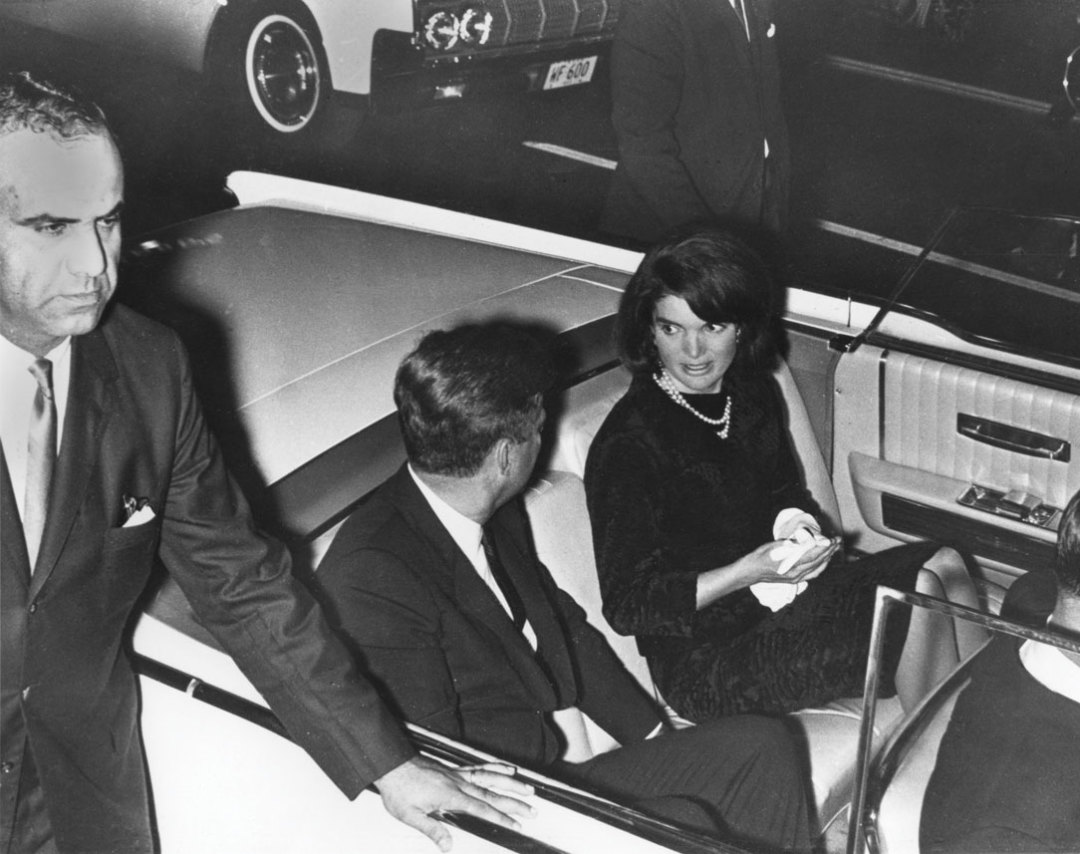
John F. Kennedy and wife Jacqueline ride through Houston in a motorcade on the day before the president’s assassination in Dallas, 1963.
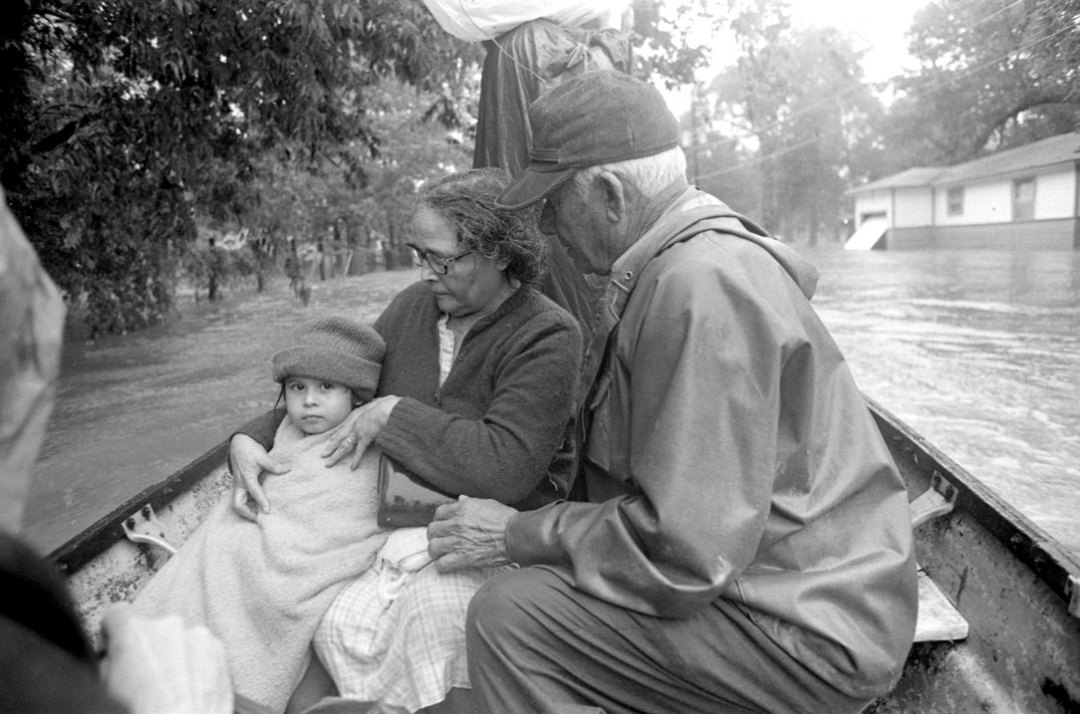
A family is rowed away from their home near Trinity Gardens following a summer storm that caused deadly flooding citywide, 1973.
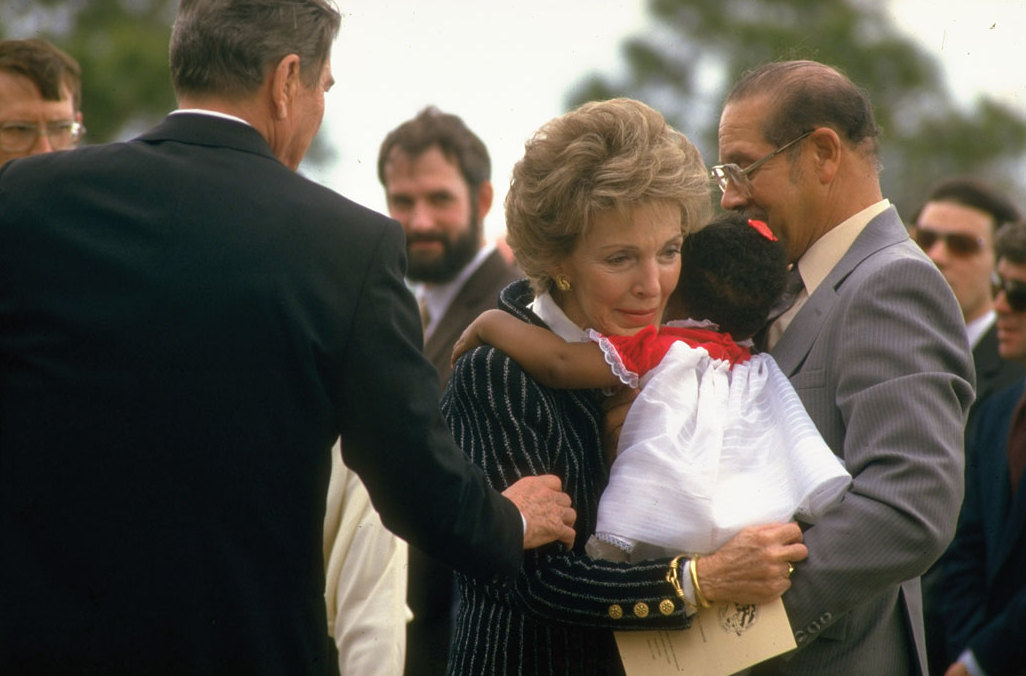
First Lady Nancy Reagan hugs a daughter of astronaut Ronald McNair at a memorial service for the seven astronauts killed when the Challenger space shuttle exploded, 1986.
Image: Diana Walker / Getty Images
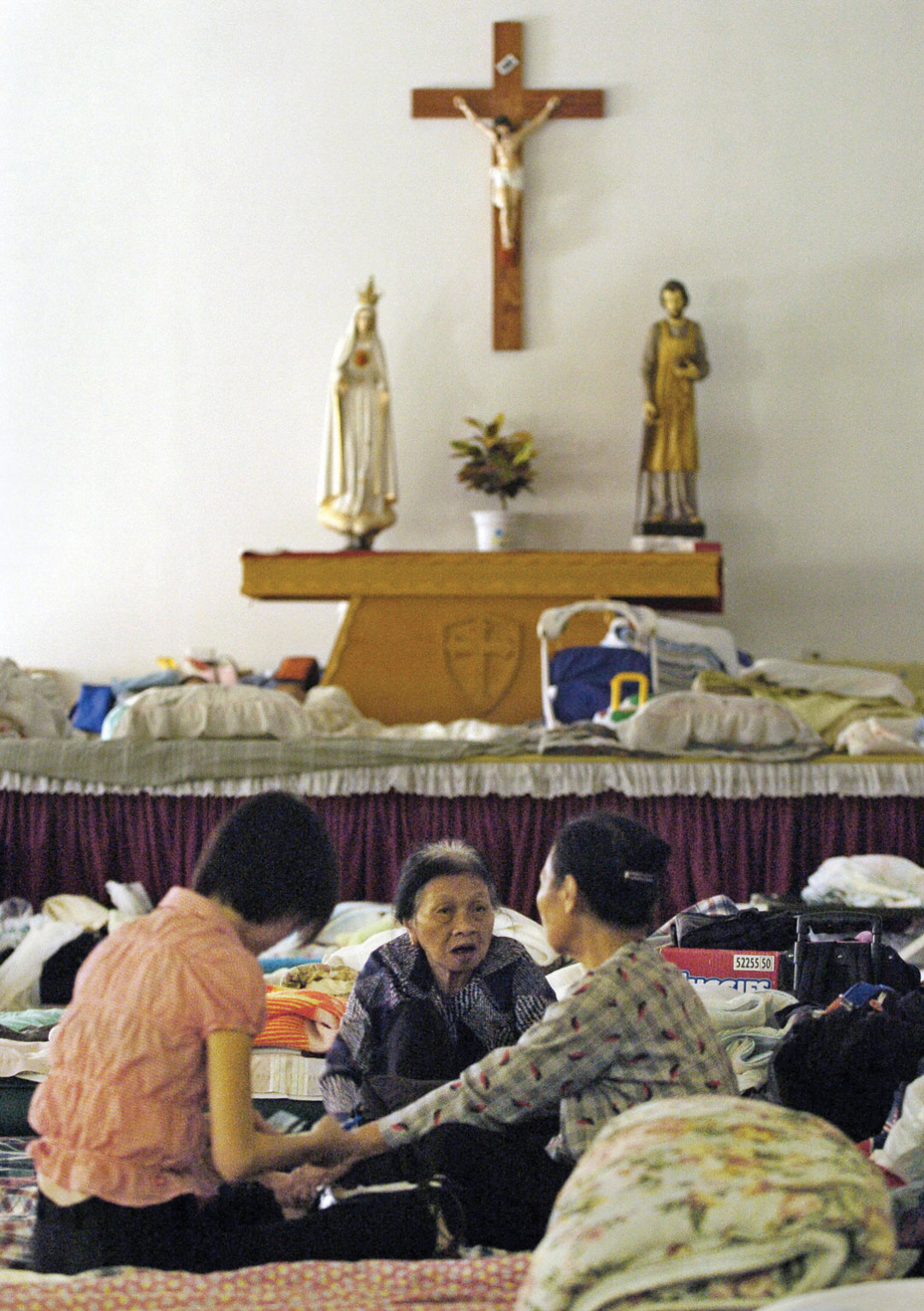
Three Vietnamese women pray together at St. Catherine’s convent in Westbury, which took in 300 New Orleans evacuees following Hurricane Katrina, 2005.
Image: Stan Honda / Getty Images
“Our enemies have given us the chance to prove that there will be another USS Houston, and yet another USS Houston if that becomes necessary, and still another USS Houston as long as American ideals are in jeopardy.”
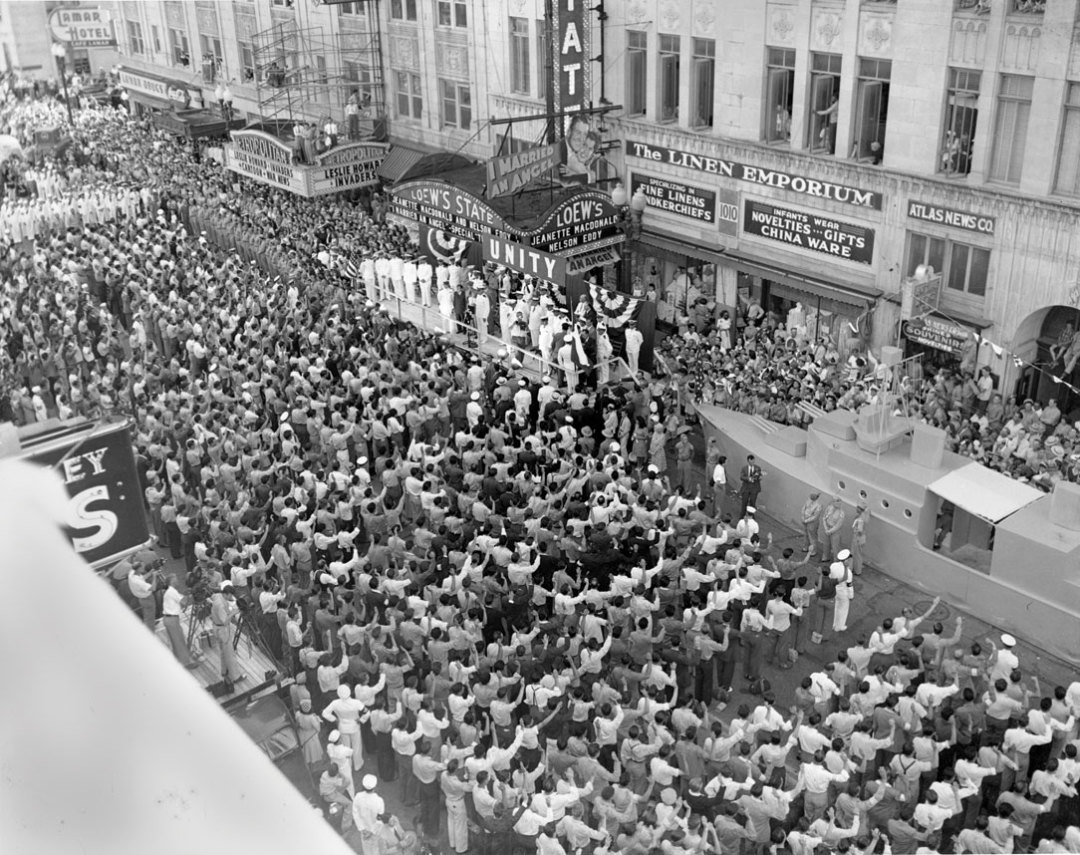
One thousand Houston men are sworn in as servicemen during a Memorial Day rally to replace the crew of the USS Houston, which had sunk during the Battle of Sunda Strait just a few months earlier. Bayou City residents also helped raise $85 million in war bonds, enough to both replace the Houston and construct a new aircraft carrier, the San Jacinto, 1942.
“The public believed that a woman had to have, over and above and beyond other aspirations, a home and family….I thought it unfortunate that the public perceived such a neat little box for us, and that in most cases we felt that the box was right. I thought: The question you have to decide, Barbara Jordan, is whether you’re going to fly in the face of what everybody expects out there because you’ve got your eye someplace else, or whether you can bring the public along to understand that there are some women for whom other expectations are possible.”
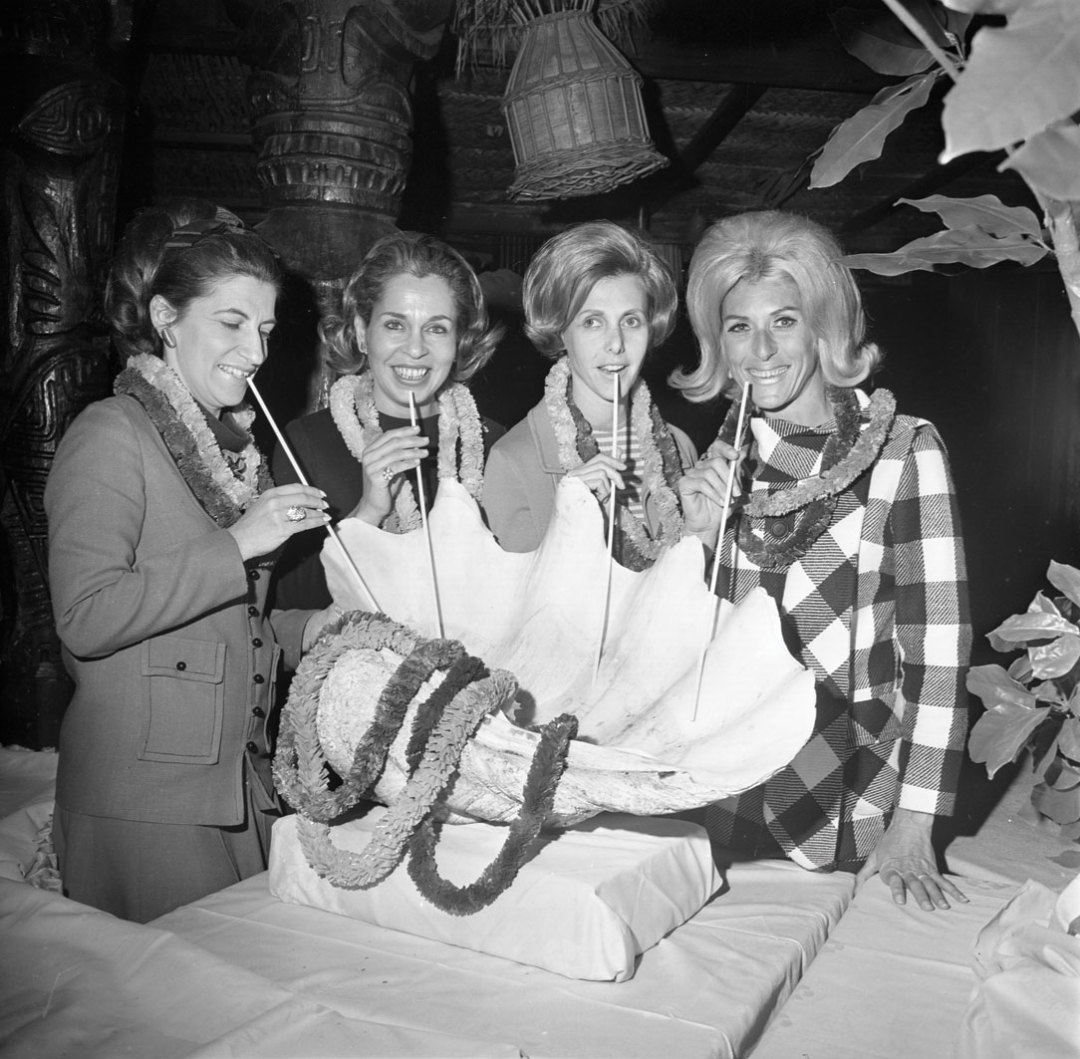
At a luncheon for Congregation Beth Yeshurun, women enjoy cocktails at Trader Vic’s, 1969.
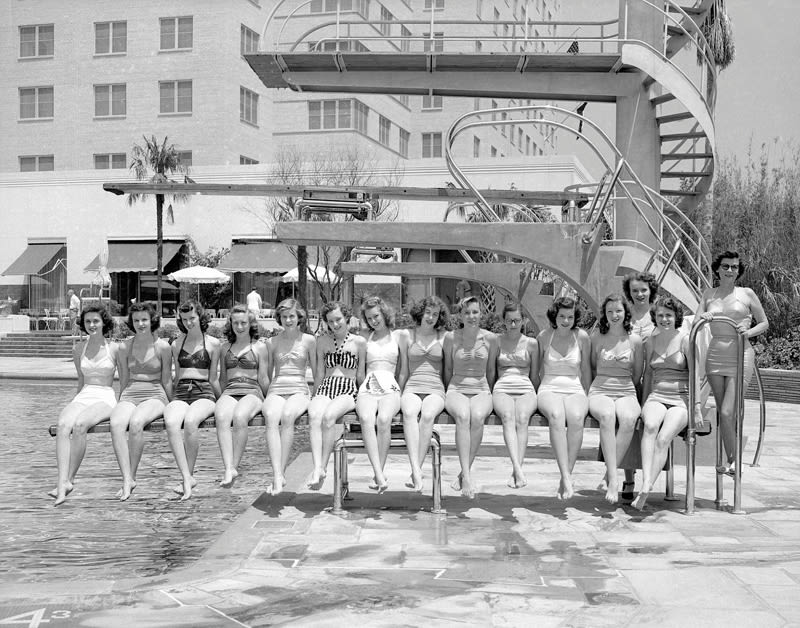
Members of the Corkettes, a synchronized swimming team based at the Shamrock Hotel, pose for a picture, c. 1950.
Image: Sloane Gallery

Barbara Young, along with her children, watches TV coverage of the Gemini 3 orbit mission, which was piloted by her husband, astronaut John W. Young, 1965.
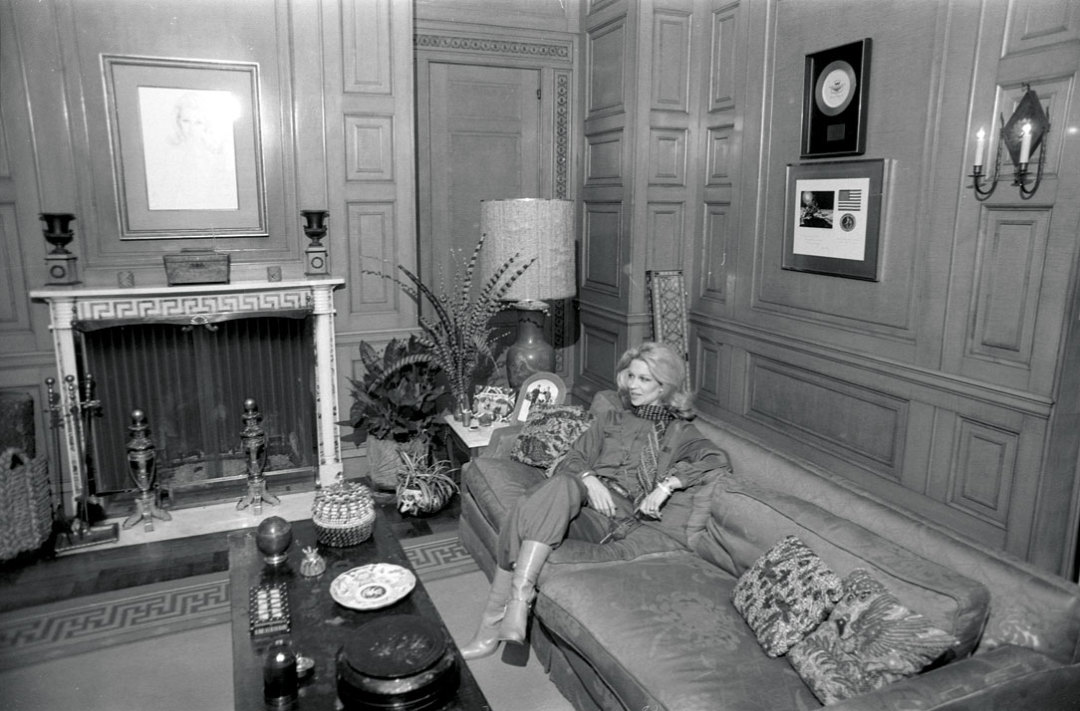
Philanthropist and socialite Lynn Wyatt relaxes inside her River Oaks home, a framed portrait of her over the fireplace, 1978.
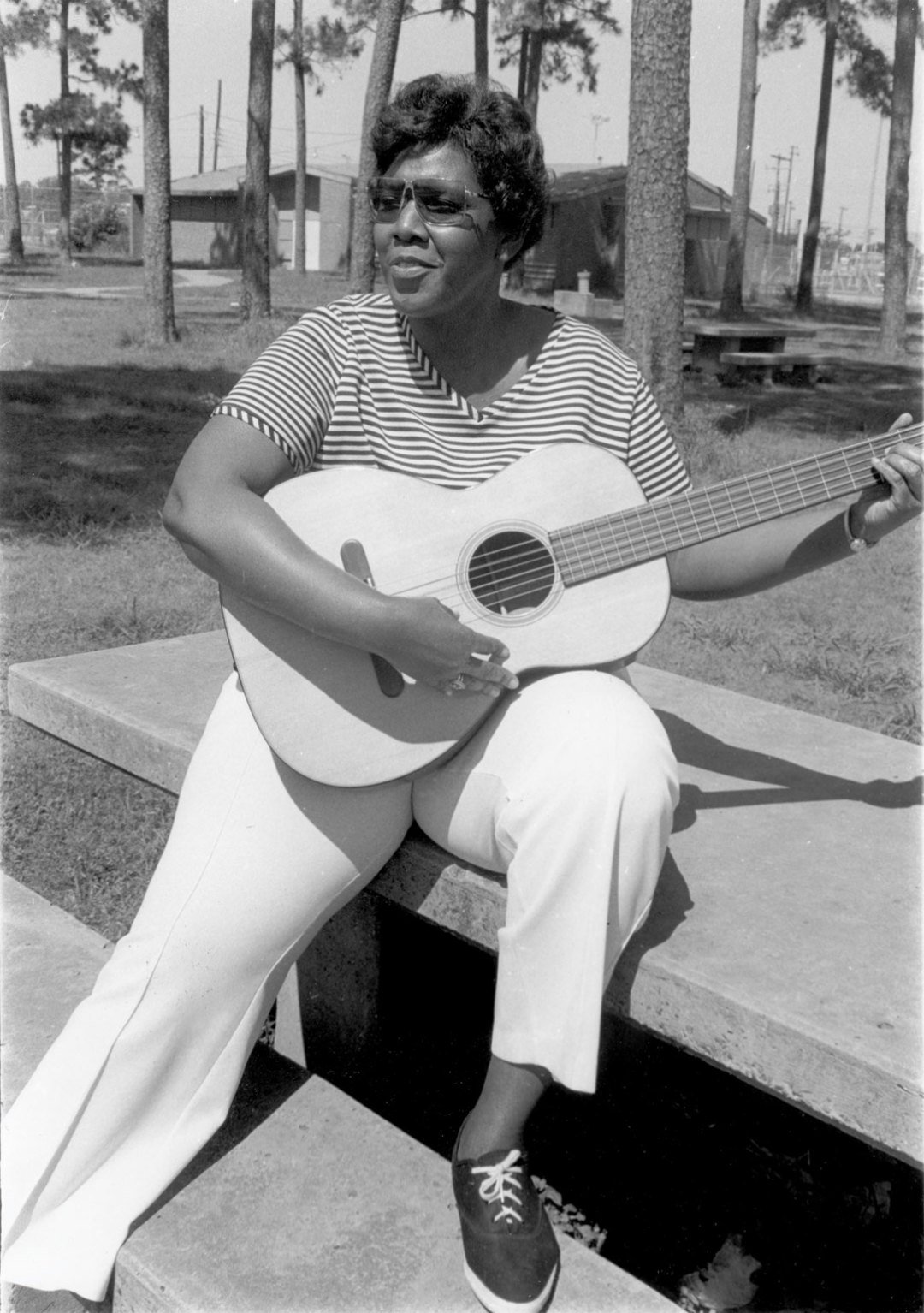
Barbara Jordan, the first black politician elected to the Texas Senate since 1883 and the first black Southern woman elected to the US House of Representatives, strums her guitar, 1970.
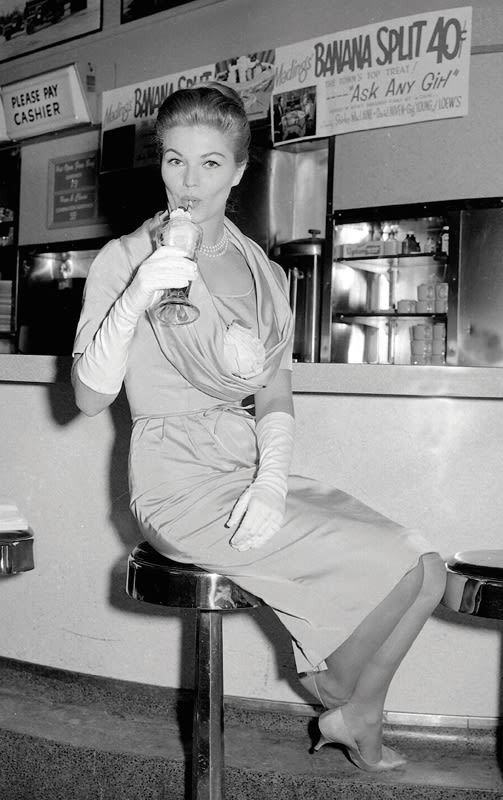
A patron sips a milkshake at the Mading’s Drug Store counter, c. 1950.
Image: Sloane Gallery
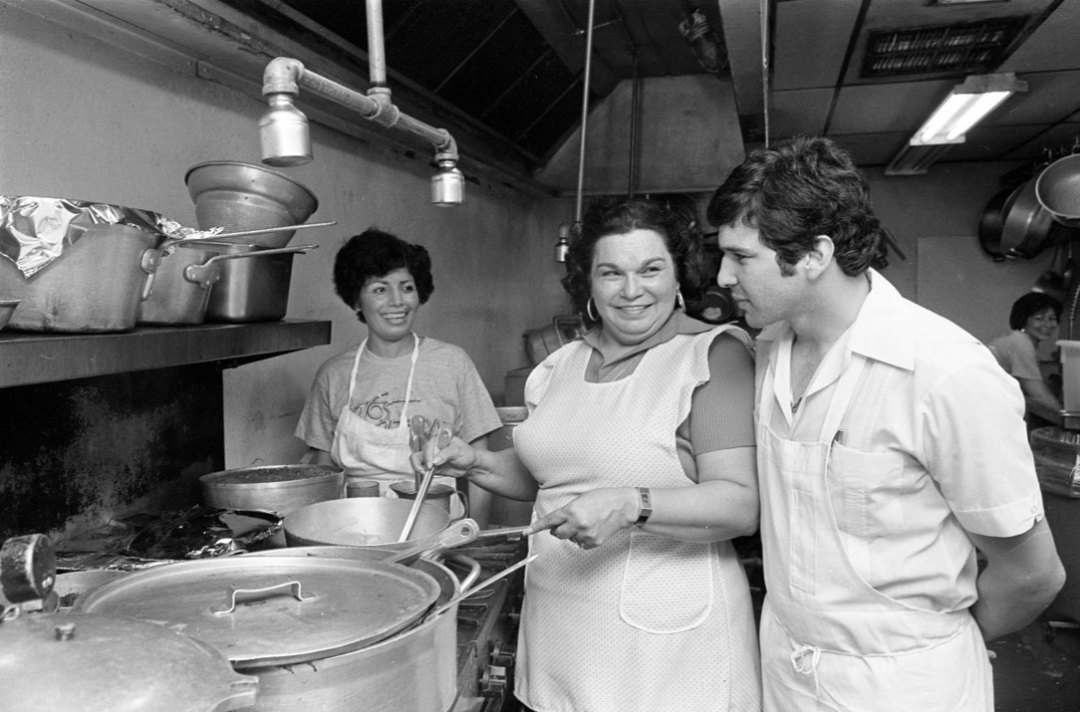
“Mama” Ninfa Laurenzo smiles at son Jack in the Ninfa’s on Navigation kitchen, 1978.
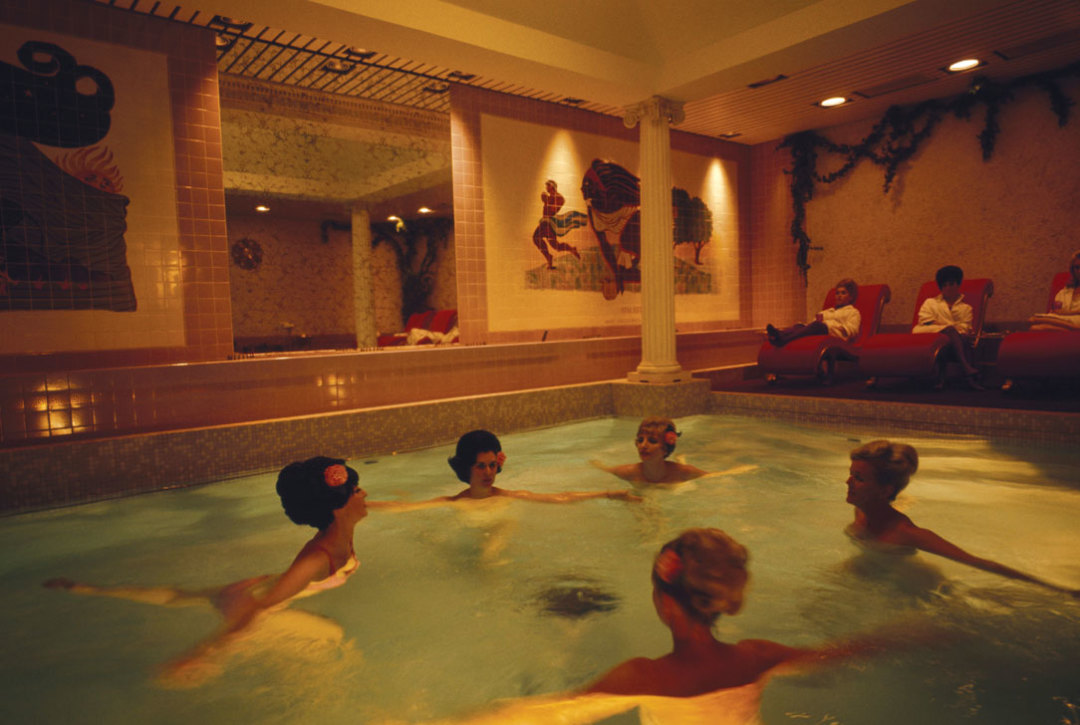
Bathing beauties frolic beneath a hand-painted mural at an unknown Houston spa, 1967.
“One might say of Houston that one never gets there. It feels as if one is always on the way, always arriving, always looking for the place where everything comes together.”
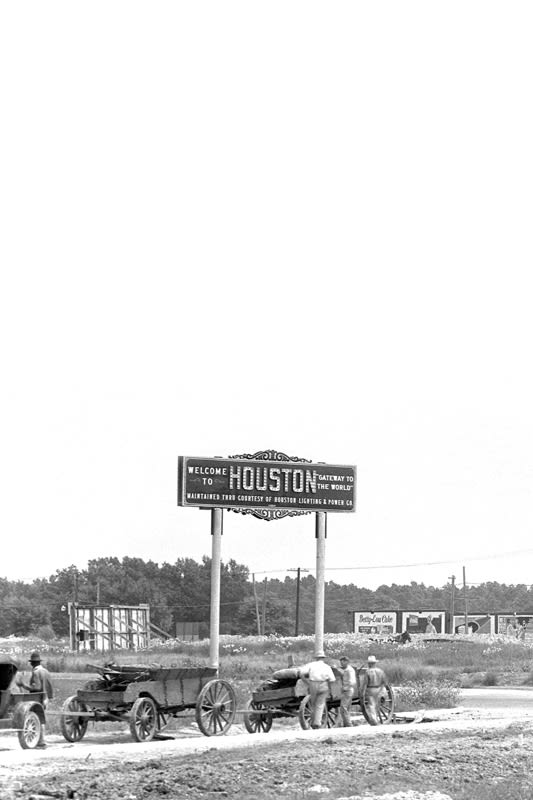
Houston Lighting & Power’s electric sign at the corner of Main St. and Bellaire Blvd. (now W. Holcombe Blvd.) welcomes visitors to the city., 1928.
Image: Sloane Gallery
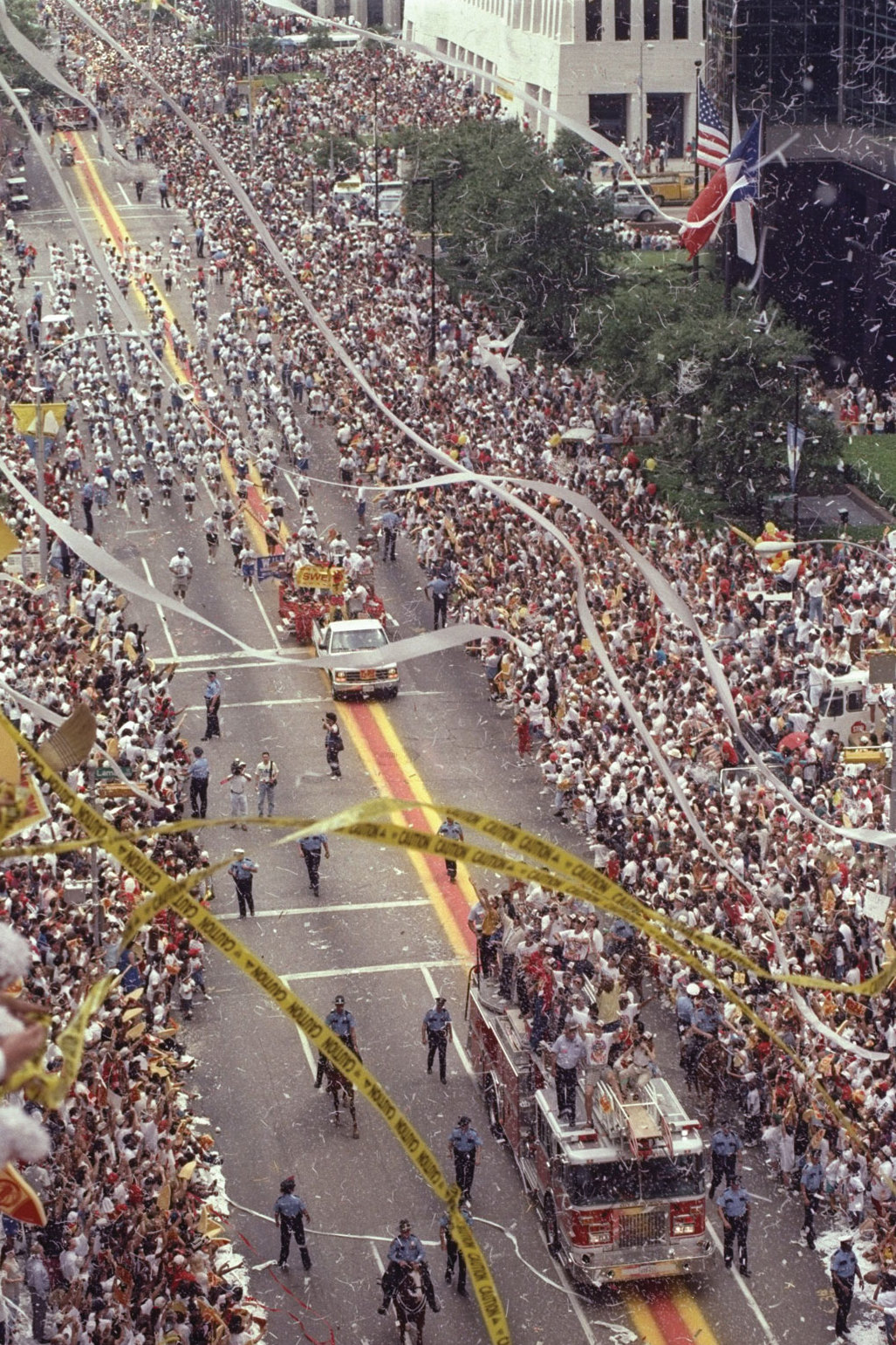
A downtown ticker tape parade celebrates the second of Houston Rockets’s back-to-back NBA championships, 1995.
Image: Allsport USA/Getty Images
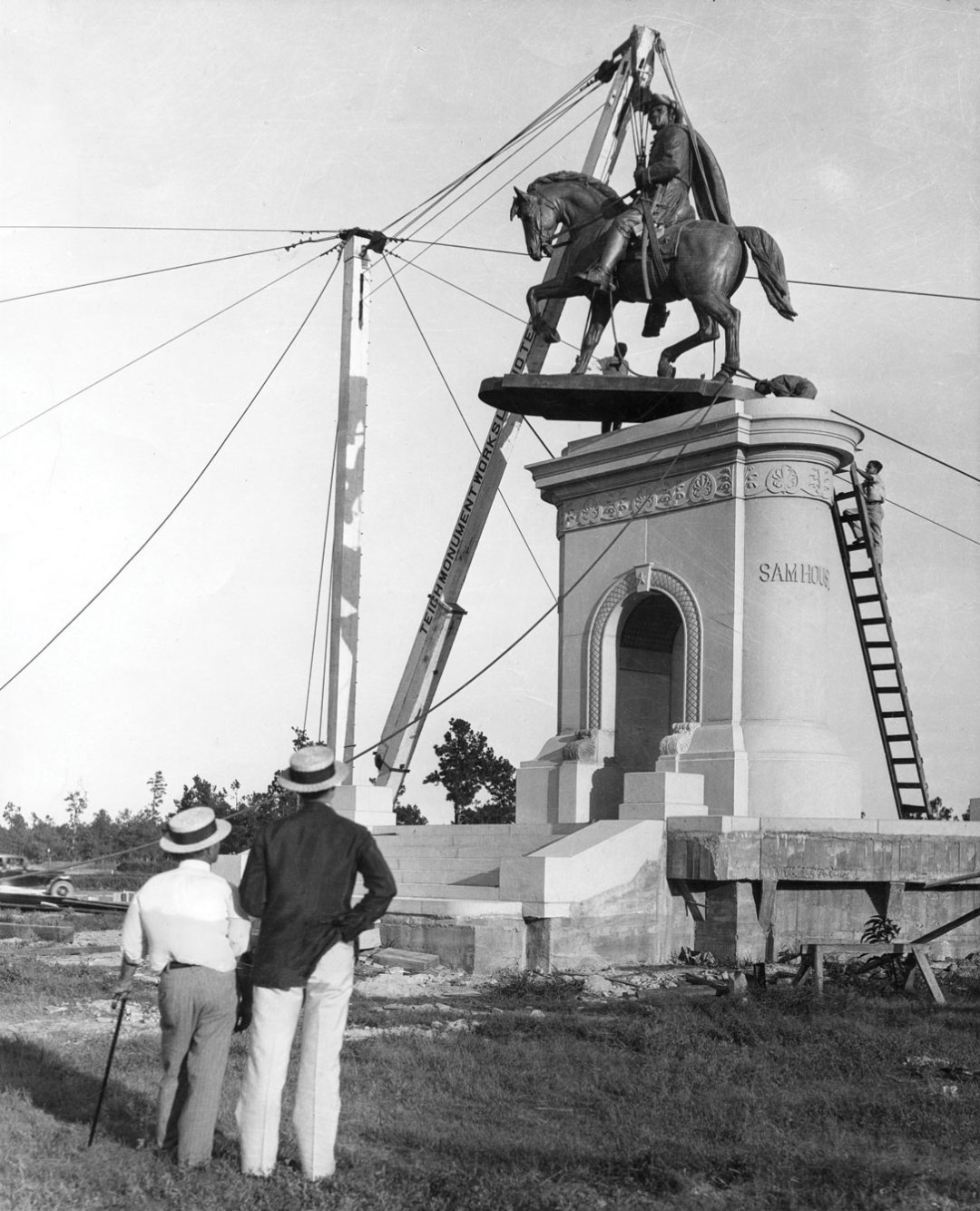
Locals watch as the Sam Houston statue is erected in Hermann Park, 1917.
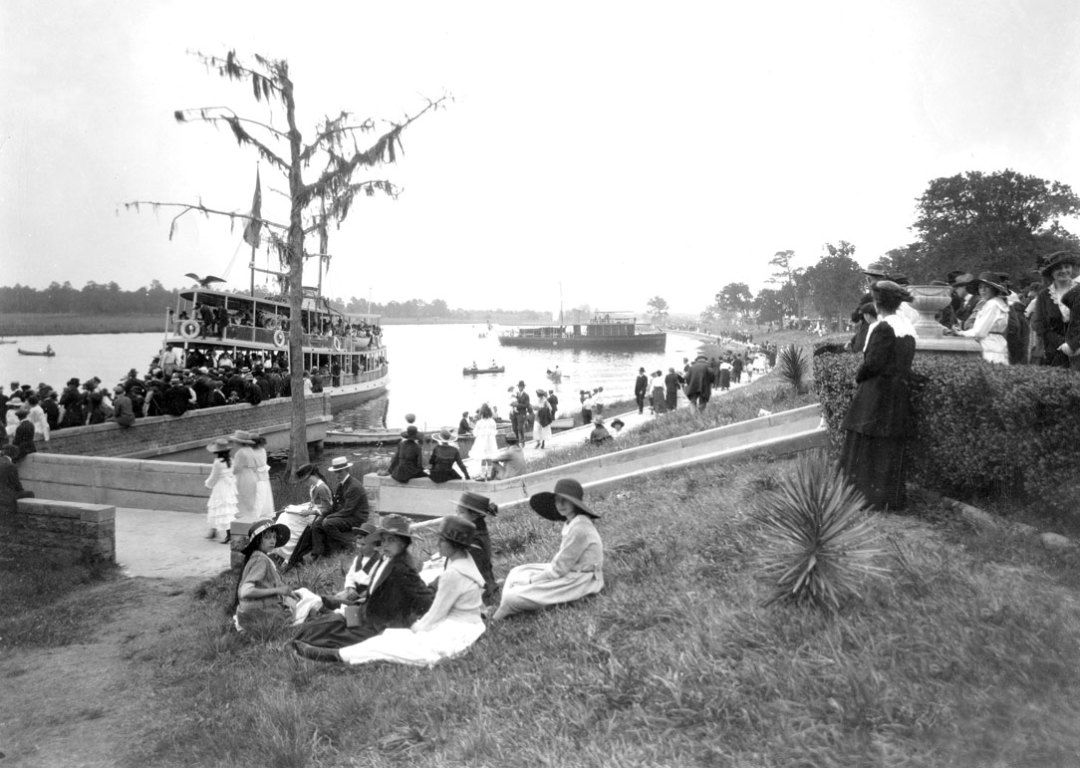
Picnickers and park-goers enjoy the Ship Channel view from the San Jacinto battleground, 1920.
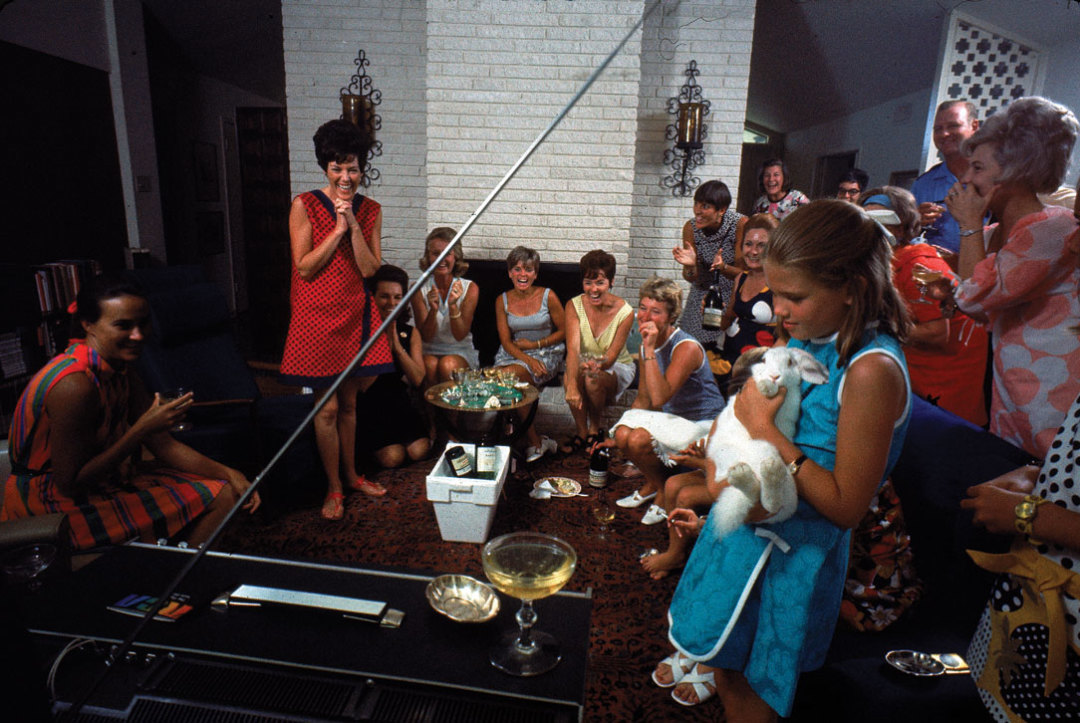
Pat Collins (in red), wife of astronaut Mike Collins, celebrates the Apollo 11 splashdown with a houseful of friends, 1969.
Image: Bob Peterson / Getty Images
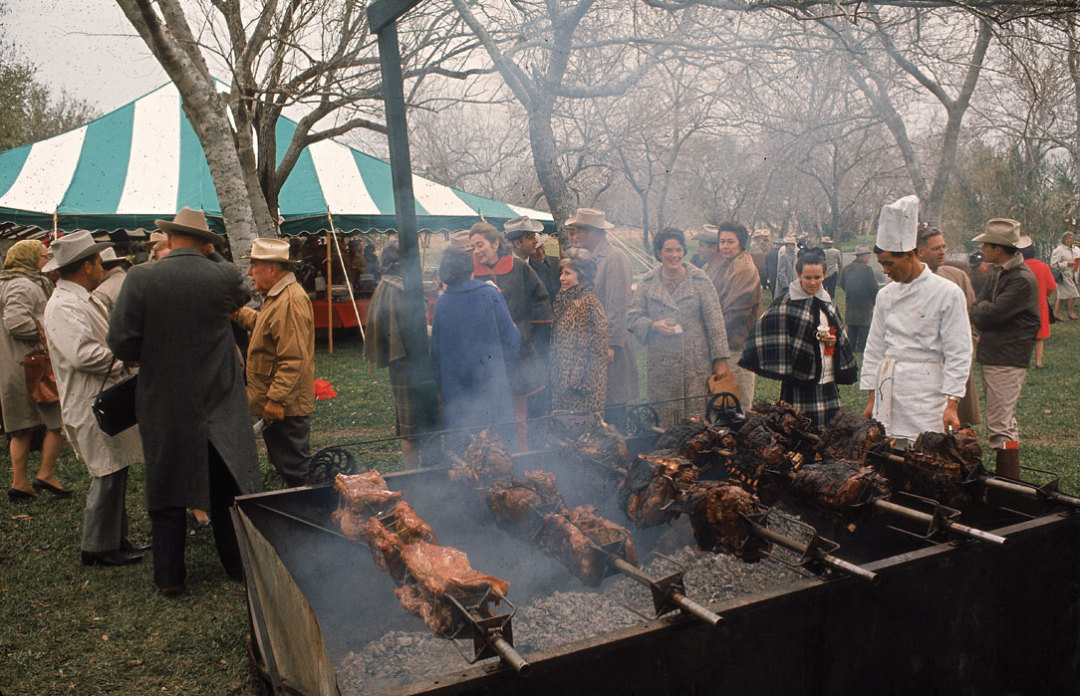
A well-heeled crowd enjoys barbecue at the annual Salt Grass Trail Ride from Brenham to Houston, 1965.
Image: Ralph Crane / Getty Images
Special Thanks
We are indebted to several Houstonians for their contributions to this photo essay. Our cover image and many others were taken from the collection of Story Sloane, whose gallery (1570 S. Dairy Ashford, sloanegallery.com) has many unique photographs of Houston available for purchase. All of the quotations were taken from an essay collection, Literary Houston (TCU Press), edited by David Theis, to our mind the best book about this city in several years. Finally, we are grateful for the work of two Houston Public Library photo archivists, Joel Draut and Tim Ronk, whose help in selecting images from among the library’s vast collection was invaluable.



